Feb. 12, 2019
Prelims Pointers
Feb. 12, 2019
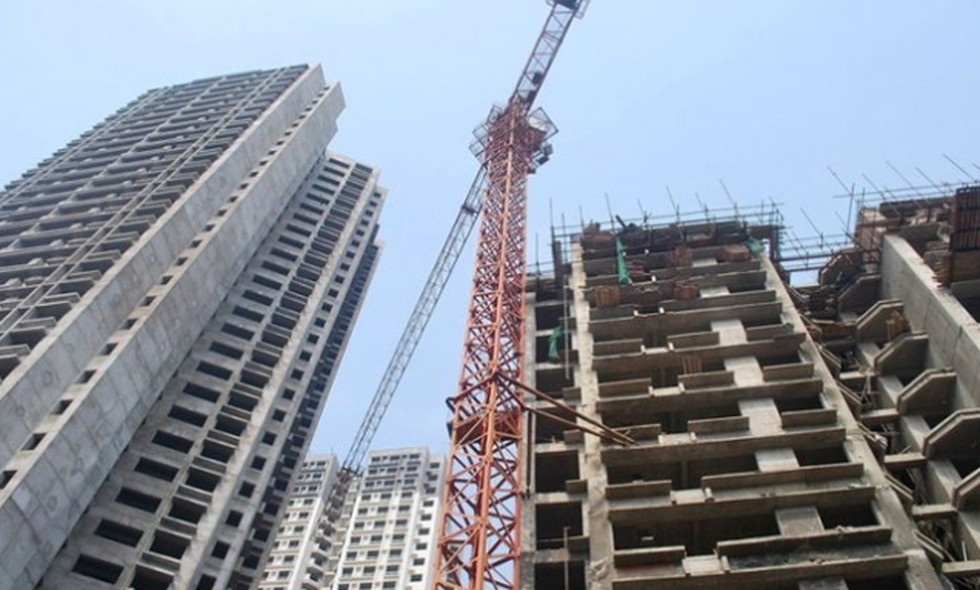
About:
- It is a challenge for States/ UTs to select six sites across the country for constructing the Lighthouse projects under GHTC-India.
- The winning six States/ UTs will be awarded lighthouse projects.
- The States/ UTs will receive Central Assistance to construct these projects as per PMAY (U) guidelines.
- A Technology Innovation Grant (TIG) for the States/ UTs is provisioned to offset the impact of any additional cost implication due to the use of new technology.
- The States/ UTs will receive Central Assistance to construct these projects as per PMAY (U) guidelines.
- The selected sites for lighthouse projects will be used as an ‘open laboratory’ for live demonstration and will receive due attention from policy makers and media apart from felicitation/ recognition in Grand Expo-cum-Conference.
- The last date for participation by the States/UTs is 20th February’19.
Global Housing Technology Challenge-India (GHTC- India):
- Background: The Ministry of Housing & Urban Affairs launched a “Global Housing Technology Challenge-India (GHTC- India)” in January 2019.
- Parent programme: Pradhan Mantri Awas Yojana Urban (PMAY-U).
- Objective: To fast-track the construction of affordable housing and meet the target of constructing 1.2 crore houses by 2022.
- Components: The challenge has three components viz.
- Conduct of Grand Expo-cum-Conference,
- Promoting Potential Technologies through the establishment of Affordable Sustainable Housing Accelerators- India (ASHA-I) for incubation and accelerator support.
- Identifying Proven Demonstrable Technologies from across the globe in actual housing projects in different parts of the country. The shortlisted global technology providers will be invited to construct “Light house projects” within the framework of PMAY (U).
Prelims Pointers
Feb. 12, 2019

About:
- Status: It is an autonomous body of the Ministry of Human Resource Development.
- Background: It was established under Societies Registration Act (Act XXI of 1860) in 1972.
- Objectives of the ICHR: To bring historians together and provide a forum for exchange of views between them and to promote, accelerate and coordinate research in history.
- In pursuance of these objectives:
- The Council provides fellowships and financial assistance to the young teachers in colleges, universities and registered research organizations, as well as to senior scholars.
- Publishes a biannual Journal - the Indian Historical Review, and another journal Itihas in Hindi.
- Maintains two regional centres namely ICHR North-East Regional Centre (Guwahati) and ICHR Southern Regional Centre (Bangalore), which provide assistance to researchers / scholars etc.
- The Council provides fellowships and financial assistance to the young teachers in colleges, universities and registered research organizations, as well as to senior scholars.
Rec-constitution of ICHR:
- As per Rule 3 of Rules of ICHR, New Delhi, 1972, the Government has reconstituted the ICHR, New Delhi for a period of three years w.e.f. the date of the first meeting of the re-constituted Council i.e. 07.01.2019 to 06.01.2022.
- The composition of the Council is as follows:
- An eminent historian nominated by the Government of India who shall be Chairman of the Council;
- Eighteen historians nominated by the Government of India;
- A Representative of the U.G.C;
- Director-General of Archaeology;
- Director, National Archives;
- Four persons to represent Government who shall be nominated by the Government of India and which shall include one representative each of the Ministry of Education, the Department of Culture and the Ministry of Finance; and Member Secretary.
- An eminent historian nominated by the Government of India who shall be Chairman of the Council;
Prelims Pointers
Feb. 12, 2019

Key Findings:
- In-Country Adoptions: Between 2015 and 2018, about 11,649 children were put up for in-country adoptions; of them 6,962 were girls and 4,687 were boys. Thus, female children comprise almost 60% of all in-country adoptions.
- Inter-Country Adoptions: Between 2015 and 2018, of the 2,310 children placed under adoption between the same period, 1,594 were females. Thus, female children comprise almost 69% of all inter-country adoptions.
Comment:
- India may have a skewed gender ratio, but the female child happens to be the first choice when it comes to adoption.
- There was little doubt that more girls were being adopted and it reflected that gender bias and the attitude of people against the girl child are changing across the country.
- The whole issue of more girls getting adopted needs to be looked into with research. The urban middle class people were preferring female children because they are concerned and aware of the situation of the girl child. The situation may not be the same for villages and small towns.
Prelims Pointers
Feb. 12, 2019

About:
- Salient Features of the Bill:
- It will be applicable to NRIs marrying Indian women within or even outside India.
- The bill proposes to provide for compulsory registration of marriage by a Non-Resident Indian within a period of thirty days from the date of marriage.
- It amends the Passport Act, 1967 so as to empower the passport authority to revoke a passport of an NRI man if he has not registered his marriage within a period of thirty days from the date of marriage.
- It amends the Code of Criminal Procedure, 1973 to empower the Courts for issuance of summons, warrants through the Ministry of External Affairs. It further provides for attachment of the properties belonging to a proclaimed offender.
- It will be applicable to NRIs marrying Indian women within or even outside India.
- Reasons for Introducing the Bill:
- There have been several reports of Indian women being trapped in fraudulent marriages with Non-Resident Indians.
- Therefore, government has decided to bring in a legislation to provide for compulsory registration of marriage for better enforcement of rights of the deserted spouses under various family laws.
- There have been several reports of Indian women being trapped in fraudulent marriages with Non-Resident Indians.
- Way ahead:
- Since the Budget session is ending and is the last session before Lok Sabha elections, the bill is unlikely to be passed.
- Since it has been introduced in Rajya Sabha and is likely to remain pending there, it would not lapse on the dissolution of the present (16th) Lok Sabha on June 3.
- Since the Budget session is ending and is the last session before Lok Sabha elections, the bill is unlikely to be passed.
Prelims Pointers
Feb. 12, 2019
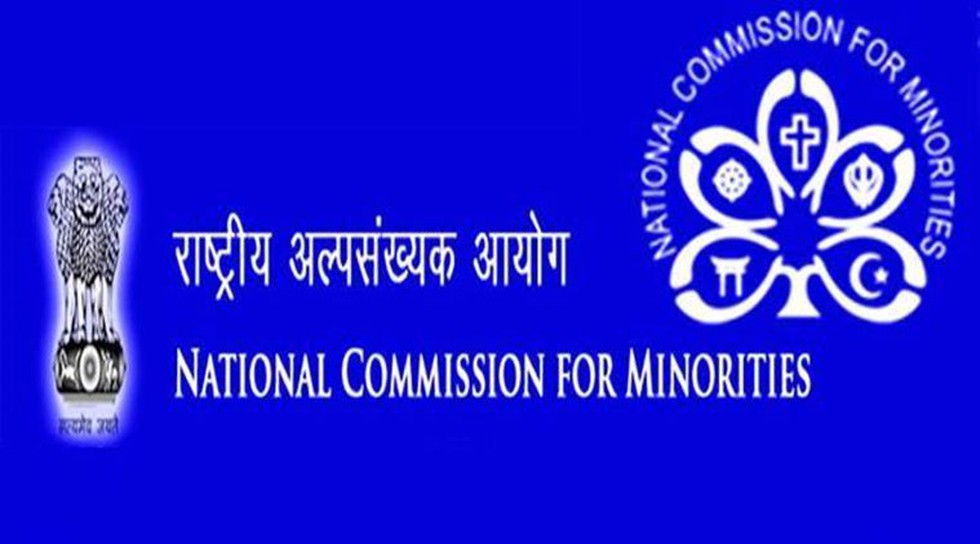
Recent Plea:
- The lawyer, in his plea, said, the term minority needed to be redefined and reconsidered in the context of population of a community in a state, instead of nationwide population data.
- Arguments sighted in petition:
- Hindus, who are a majority community as per national data, are a minority in several north-eastern states and in Jammu and Kashmir.
- Hindu community is deprived of benefits which are available to the minority communities in these states, hence NCM should reconsider the definition of minority.
- Hindus, who are a majority community as per national data, are a minority in several north-eastern states and in Jammu and Kashmir.
National Commission for Minorities:
- Background:
- In 1978, Government of India, vide an executive order, set up a "Minorities Commission" to safeguard the interests of minorities.
- With the enactment of the National Commission for Minorities Act, 1992, the Minorities Commission became a statutory body and was renamed as the "National Commission for Minorities".
- In 1978, Government of India, vide an executive order, set up a "Minorities Commission" to safeguard the interests of minorities.
- Functions:
- To evaluate the progress of the developmental programs and legal & constitutional safeguards for the welfare of minorities.
- To Look into specific complaints regarding deprivation of the rights of minorities.
- To undertake studies/research on the issues relating to socio economic development of minorities.
- To evaluate the progress of the developmental programs and legal & constitutional safeguards for the welfare of minorities.
- Composition: It consists of a Chairperson, a Vice Chairperson and five Members to be nominated by the Central Government from amongst persons of eminence, ability and integrity.
Prelims Pointers
Feb. 12, 2019
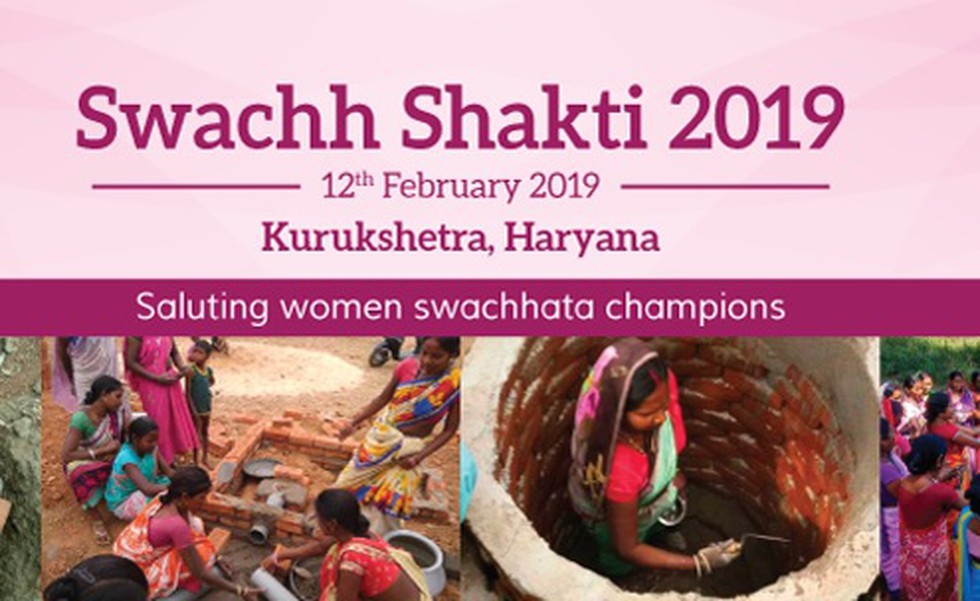
About:
- Objective: Swachh Shakti-2019 is a national event which aims to bring in to focus the leadership role played by rural women in Swachh Bharat Mission.
- Participants: Women Sarpanches and Panches from all over the country will be attending the event.
- Organized by: The Ministry of Drinking Water and Sanitation in association with the Govt. of Haryana is organizing the Swachh Shakti-2019.
- Key highlights of the event:
- Best practices from grass root level in the rural areas for Swachh Bharat will be shared by them.
- The event will showcase the achievements of Swachh Bharat and the recently conducted Swachh Sunder Shauchalay, (neat and clean toilet) - a unique and first of its kind in the world campaign.
- PM will distribute the Swachh Shakti-2019 awards.
- Best practices from grass root level in the rural areas for Swachh Bharat will be shared by them.
- Background:
- PM Narendra Modi launched the Swachh Shakti program first in 2017 at Gandhinagar, Gujarat where he honoured 6000 women sarpanches from across the country.
- The second Swachh Shakti event, Swachh Shakti-2018 was held at Lucknow, U.P.
- Now the third edition is being inaugurated from Kurukshetra.
- PM Narendra Modi launched the Swachh Shakti program first in 2017 at Gandhinagar, Gujarat where he honoured 6000 women sarpanches from across the country.
Prelims Pointers
Feb. 12, 2019
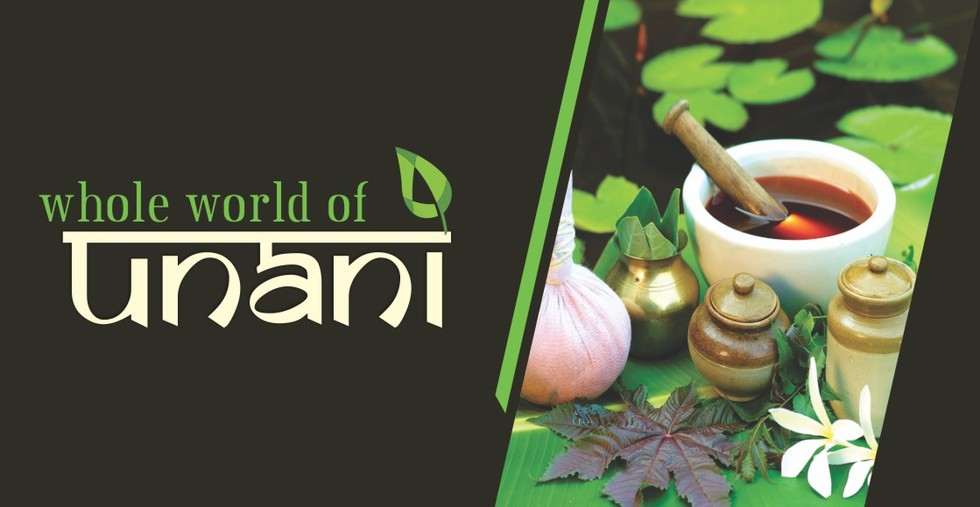
About the conference:
- Organized by: Central Council for Research in Unani Medicine (CCRUM), established in 1979 by the Government of India as an autonomous organisation to co-ordinate scientific research in Unani System of Medicine.
- Objective: To commemorate the birth anniversary of Hakim Ajmal Khan which is observed as Unani Day.
- On the occasion, CCRUM distributed AYUSH Awards for Unani Medicine in recognition of contributions made by various Unani experts.
Principles of Unani System:
- The basic theory of Unani system is based upon the well- known four- humour theory of Hippocrates.
- It postulates the presence of four humours in the body: dam (blood), balgham (phlegm), safra (yellow bile) and sauda (black bile), a parallel to kapha, vata and pitta, the three doshas in ayurveda.
- The quality and quantity of four humors affect the state of health and disease in the body.
Timeline of Unani System of Medicine:
- Origin:
- Unani system originated in Greece. The theoretical framework of Unani medicine is based on the work of Hippocrates (460-377 BC).
- The term Unani is derived from 'Unan', Arabic and Urdu for 'Greece'. That’s why it is sometimes referred to as the "Greco-Arab" medicine or "Unani Tibb".
- Unani system originated in Greece. The theoretical framework of Unani medicine is based on the work of Hippocrates (460-377 BC).
- Role of Arabs: The system owes its present form to the Arabs who not only saved much of the Greek literature by rendering it into Arabic but also enriched it with their own contributions.
- Indian scenario:
- In India, it was introduced by Arabs and Persians sometime around the eleventh century.
- During 13th and 17th century A.D. Unani Medicine reached its zenith under Mughals.
- But, during the British rule in India all the traditional systems of medicine along with Unani System faced almost complete neglect for about two centuries.
- In India, it was introduced by Arabs and Persians sometime around the eleventh century.
- Revival by Hakim Ajmal Khan:
- It saw the beginning of its revival during the freedom struggle due to the efforts of Hakim Ajmal Khan, a renowned physician and a freedom fighter.
- He established Ayurvedic and Unani Tibbia College and Hindustani Dawakhana a pharmaceutical company for manufacturing of Ayurvedic and Unani medicine in Delhi in 1916. Mahatma Gandhi inaugurated the college in 1921.
- Birth anniversary of Hakim Ajmal Khan is celebrated as Unani Day on 11th February every year.
- It saw the beginning of its revival during the freedom struggle due to the efforts of Hakim Ajmal Khan, a renowned physician and a freedom fighter.
Prelims Pointers
Feb. 12, 2019
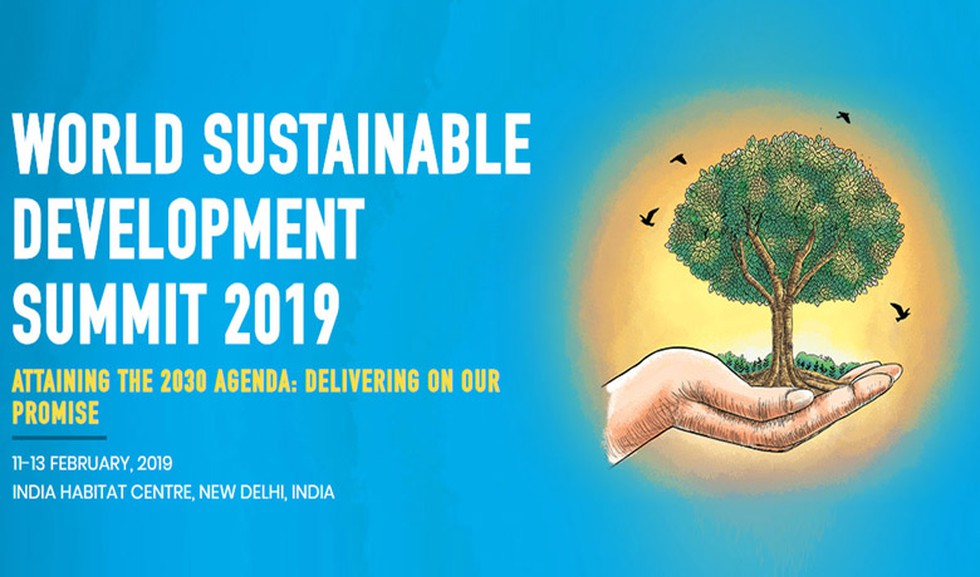
About:
- Organized by: It is an annual event of The Energy and Resources Institute (TERI).
- It started off as Delhi Sustainable Development Summit (DSDS) in 2001.
- With an aim of expanding the scope and reach of the Summit to the global community, DSDS transitioned to WSDS in 2016.
- It started off as Delhi Sustainable Development Summit (DSDS) in 2001.
- What is it? It brings together political leaders, business leaders, scientists and researchers, media personnel, and members of civil society to deliberate on issues related to sustainable development.
- Theme of WSDS 2019: “Attaining the 2030 Agenda: delivering on our promise”.
- The United Nations, in its roadmap to Climate Summit 2019, has recognized WSDS 2019 as one of the key milestones leading up to the United Nations Secretary General's Climate Summit on 23 September 2019.
Carbon Pricing Leadership Coalition (CLPC) Research Conference - 14-15 February, 2019
- The CPLC Research Conference follows the 2019 edition of the World Sustainable Development Summit (WSDS) and is convened by the Carbon Pricing Leadership Coalition (CPLC).
- The CPLC - hosted by the World Bank Group - is an international advocacy coalition of governments, businesses, and civil society organizations aiming to address climate change and contribute to global sustainable development through widespread carbon pricing.
- The Conference aims to build a better understanding of the existing carbon pricing knowledge base by bringing together over 30 researchers and 300 participants.
Prelims Pointers
Feb. 12, 2019
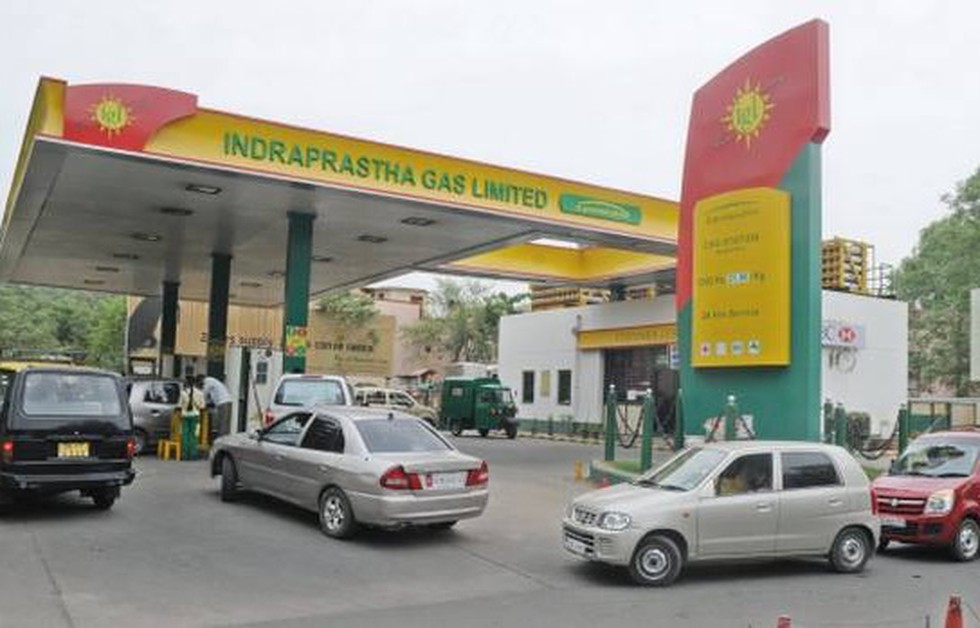
About:
- Coverage: The guidelines are being introduced in over 150 districts of the country spread across 87 Geographical Areas (GAs) defined by PNGRB, where entities promoted by state run companies are currently operating.
- Implementation: Most of the City Gas Distribution (CGD) entities run by central public sector undertakings will execute these guidelines for further setting up of CNG stations on DODO model in the country.
- Salient Features of Guidelines:
- The entire plot owned by a private owner shall be developed exclusively for setting up of CNG station and allied commercial activities at the discretion of CGD entity.
- After selection of the site, the plot owner applicant desirous of setting up CNG station will have to enter into a long-term agreement with CGD entity.
- The CNG equipment’s shall be installed and commissioned by CGD entity while adhering to all the statutory rules/guidelines related to fire and safety.
- On its part, the dealer will have to arrange all the permissions to setup CNG Station including change of land use, necessary clearance, license, etc. at own expense and cost.
- The day to day operation of the equipment as well as of CNG retail outlet shall be the responsibility of the appointed dealer.
- The dealer shall be paid commission by the concerned CGD entity as per the sales achieved based on the fixed dealer commission.
- The entire plot owned by a private owner shall be developed exclusively for setting up of CNG station and allied commercial activities at the discretion of CGD entity.
- Significance:
- This will not only reduce the cost of setting up CNG filling stations for CGD entities but will also provide land owners and investors to become partners in this green drive.
- It will ensure easy availability of CNG across the country.
- This will not only reduce the cost of setting up CNG filling stations for CGD entities but will also provide land owners and investors to become partners in this green drive.
Prelims Pointers
Feb. 12, 2019
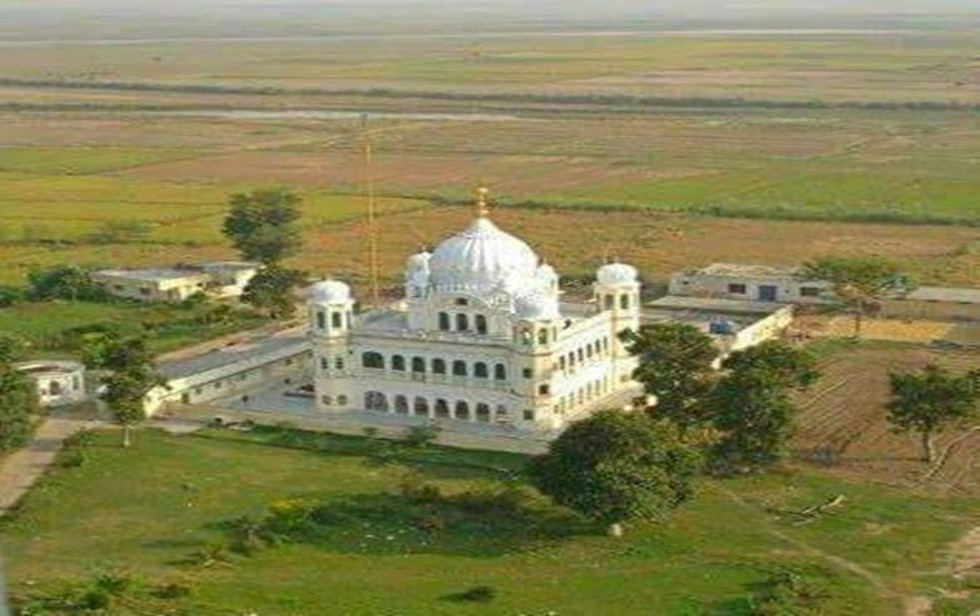
Recent Decision:
- A notification issued by the Home ministry says all classes of passengers with valid travel documents can exit or enter through the post.
- The government also appointed the Chief Immigration Officer as the Civil Authority for the purpose, with effect from today.
Kartarpur Sahib corridor:
- Location: Kartarpur, where Guru Nanak had spent more than 18 years of his life, is located in Shakargarh in Narowal district of Pakistan’s Punjab.
- Corridor plan:
- Though Kartarpur Sahib is barely 3-4 kms across the Indo-Pakistan border, Indian pilgrims were required to access it via Lahore.
- The proposed Kartarpur Sahib corridor will connect the Kartarpur Gurdwara with Dera Baba Nanak shrine in India's Gurdaspur district.
- This will facilitate visa-free movement of Indian Sikh pilgrims, who will have to just obtain a permit to visit Kartarpur Sahib that was established in 1522 by Guru Nanak Dev.
- Though Kartarpur Sahib is barely 3-4 kms across the Indo-Pakistan border, Indian pilgrims were required to access it via Lahore.
- Timeline of Implementation:
- In November 2018, Vice President Venkaiah Naidu laid the foundation stone of the Dera Baba Nanak-Kartarpur Sahib Corridor at an event at Mann village in Gurdaspur district.
- Subsequently, Pakistani Prime Minister Imran Khan laid the foundation stone of the corridor on the Pakistan side, which is expected to be completed by 2019.
- In November 2018, Vice President Venkaiah Naidu laid the foundation stone of the Dera Baba Nanak-Kartarpur Sahib Corridor at an event at Mann village in Gurdaspur district.
Feb. 11, 2019
Prelims Pointers
Feb. 11, 2019
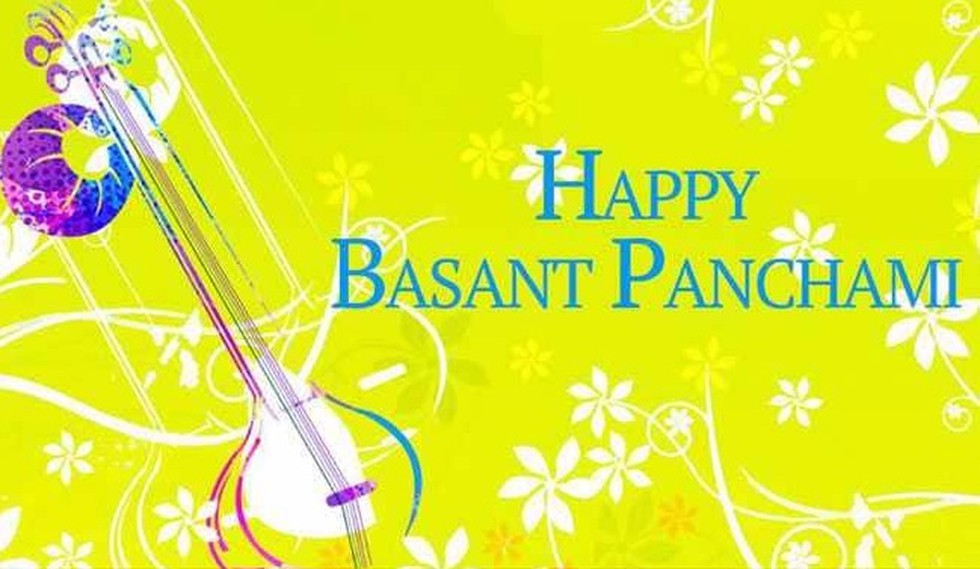
About:
- Basant Panchami or Vasant Panchami marks the beginning of the spring season - Basant means spring and Panchami means "the fifth day" (or Panchmi of Shukla Paksha in Magh Maas).
- The day is also celebrated as Saraswati Puja and the Hindu goddess of wisdom and knowledge, Saraswati, is worshipped on this day.
- Regions: Saraswati Puja on Vasant Panchami is more popular in Bengal, Odisha and North Indian states like Uttar Pradesh, Bihar, Rajasthan, Madhya Pradesh.
- How Basant Panchami, Saraswati Puja Is Celebrated?
- On this day, the Hindus visit temples and pray to Goddess Saraswati. Several schools begin their session on Saraswati Puja day.
- Men, women and children dress up in the vibrant yellow colour as mustard fields in northern parts of India blooms during this season.
- Yellow flowers are offered to Goddess Saraswati and the festive yellow dishes like sweet saffron rice, kesari sheera, boondi ke ladoo, rajbhog and khichdi are prepared in homes.
- People also fly kites, distribute sweets, offer prayers in temples and music events are also held to celebrate this day.
- On this day, the Hindus visit temples and pray to Goddess Saraswati. Several schools begin their session on Saraswati Puja day.
Prelims Pointers
Feb. 11, 2019
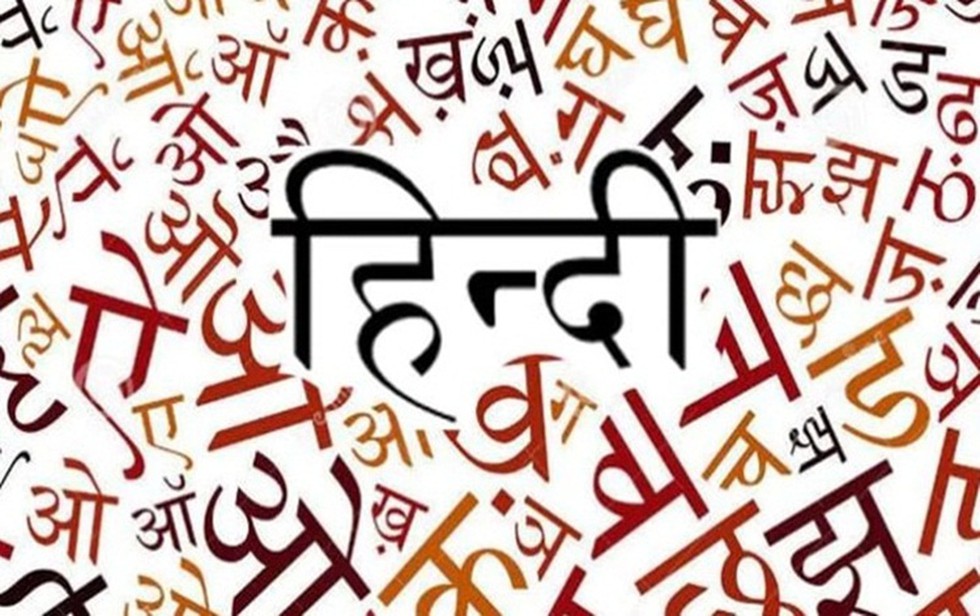
About:
- The Abu Dhabi Judicial Department (ADJD) said, it has extended the adoption of interactive forms of statement of claims filed before courts by including Hindi.
- Significance:
- The UAE population is estimated to be around five million of which 2/3rd are immigrants from foreign countries. An estimated 3.3 million Indian expats live in UAE, and a large number of them are blue collared workers.
- The move will help the Hindi speakers to learn about litigation procedures, their rights and duties without a language barrier, in addition to facilitating registration procedures via unified forms available through the ADJD website.
- The UAE population is estimated to be around five million of which 2/3rd are immigrants from foreign countries. An estimated 3.3 million Indian expats live in UAE, and a large number of them are blue collared workers.
- Comment: Relations between India and UAE has been on the upswing in the last few years, especially after the high-level visits which have helped in strengthening the bilateral relations between the two countries.
Abu Dhabi is the capital and the second most populous city of the United Arab Emirates, and also capital of the Emirate of Abu Dhabi, the largest of the UAE's seven emirates.
Prelims Pointers
Feb. 11, 2019
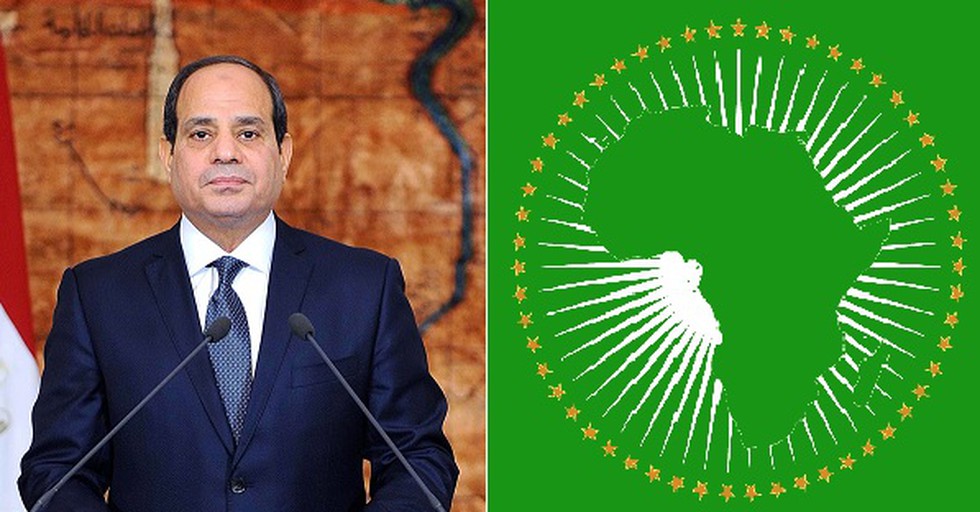
About:
- When formed: 2002.
- HQ: Addis Ababa, Ethiopia.
- Membership: 55 countries of the continent of Africa.
- Main objectives are:
- To rid the continent of the remaining vestiges of colonization and apartheid;
- To promote unity and solidarity among African States;
- To coordinate and intensify cooperation for development;
- to safeguard the sovereignty and territorial integrity of Member States and
- To promote international cooperation within the framework of the United Nations.
- To rid the continent of the remaining vestiges of colonization and apartheid;
- Key initiatives taken:
- New Partnership for Africa's Development (NEPAD): It is an economic development program of the African Union; STARTED IN 2001.
- The Treaty establishing the African Economic Community (AEC) - 1991: commonly known as the Abuja Treaty, it seeks to create the AEC through six stages culminating in an African Common Market using the Regional Economic Communities (RECs) as building blocks. The Treaty has been in operation since 1994.
- New Partnership for Africa's Development (NEPAD): It is an economic development program of the African Union; STARTED IN 2001.
Prelims Pointers
Feb. 11, 2019
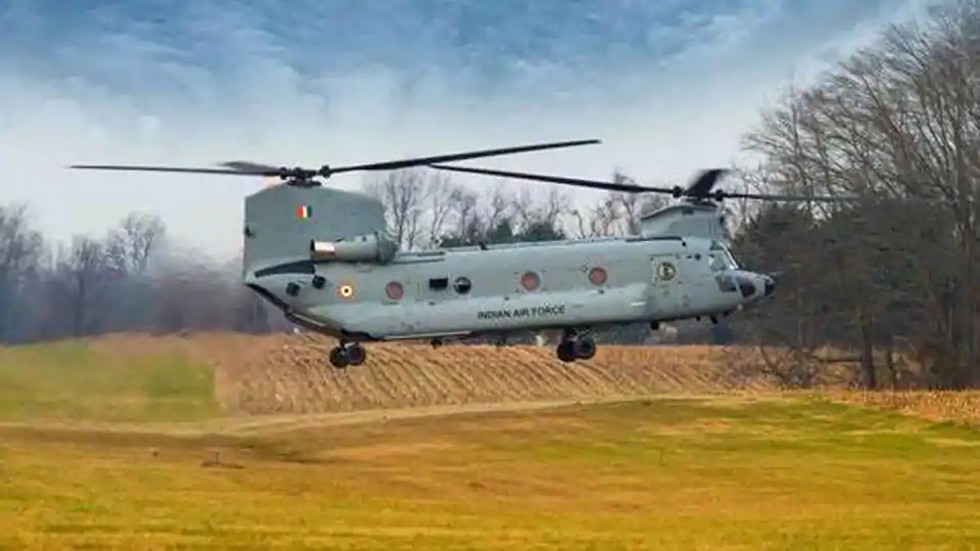
About:
- Background: India had signed a 3-billion-dollar deal with the US in 2015 for the purchase of 15 Chinook heavy lift and 22 AH-64E Apache attack helicopters.
- Boeing, the maker of Chinooks, has delivered the CH-47F (I) Chinooks ahead of schedule. The CH-47F (I) was received at the Mundra Port in Gujarat and will be transported to its home base at Chandigarh.
- Features:
- The Chinook is a multi-role, vertical-lift platform, which is used for transporting troops, artillery, equipment and fuel.
- It is also used for humanitarian and disaster relief operations and in missions such as transportation of relief supplies and mass evacuation of refugees.
- Chinooks have a unique twin engine, tandem rotor design which has become one of the most visibly recognised symbols of the American armed forces.
- The helicopter, which can carry around 10 tonnes of load, will significantly enhance IAF's air lift capabilities.
- The Chinook is a multi-role, vertical-lift platform, which is used for transporting troops, artillery, equipment and fuel.
Prelims Pointers
Feb. 11, 2019
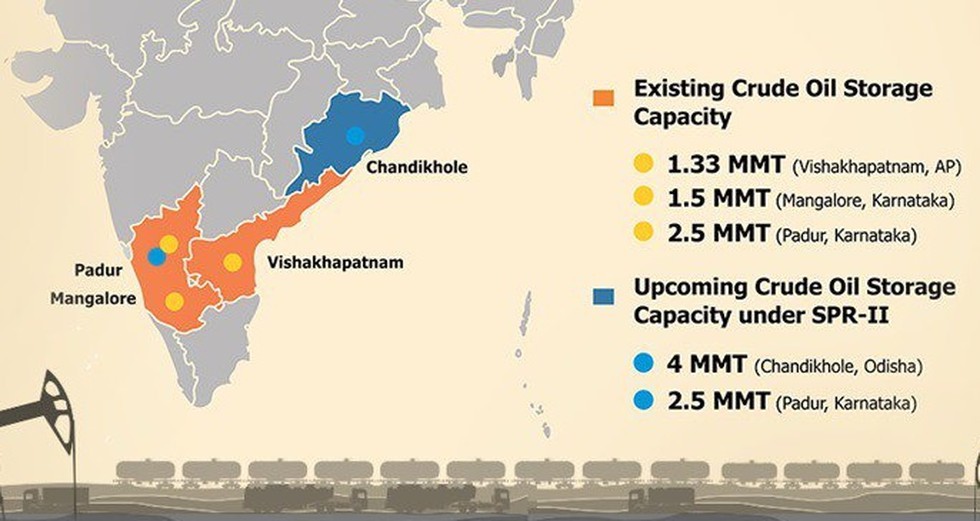
About:
- The Government of India is setting Strategic petroleum reserves, which are essentially huge stockpiles of crude oil that would serve as a cushion during any external supply disruptions.
- These strategic storages would be in addition to the existing storages of crude oil and petroleum products with the oil companies.
- Working:
- In India, these are being constructed near the coastal regions in underground rock caverns (as they are considered the safest means of storing hydrocarbons).
- Crude oil from these caverns can be supplied to the Refineries either through pipelines or through a combination of pipelines and ships.
- In India, these are being constructed near the coastal regions in underground rock caverns (as they are considered the safest means of storing hydrocarbons).
Indian scenario:
- ISPRL has constructed three strategic petroleum reserves at Visakhapatnam on the East Coast, and at Mangaluru and Padur (near Udupi) on the West Coast. These facilities, with total capacity of 5.33 million tonnes, can meet 10 days of India’s crude oil requirements.
- In July 2018, the government approved the construction of two more reserves at Chandikhol in Odisha and Padur in Karnataka, having an aggregate capacity of 6.5 million tonnes. The new facilities can provide additional supply for about 12 days.
- In 2018, the Government of India also announced that it would increase the size of the SPR to 87 days’ worth of the country’s net crude oil imports by 2020.
Indian Strategic Petroleum Reserves Ltd (ISPRL)?
The construction of SPRs is being managed by Indian Strategic Petroleum Reserves Limited (ISPRL), a Special Purpose Vehicle, which is a wholly owned subsidiary of Oil Industry Development Board (OIDB) under the Ministry of Petroleum & Natural Gas.
Prelims Pointers
Feb. 11, 2019

About:
- S1-Vasishta Development Project is the first of the tough deep-sea forays of ONGC, in the promising eastern offshore.
- Project Type: Gas field development.
- Location: S1 and Vashista fields are free gas fields located 30-35 km off Amalapuram, Andhra Pradesh in Krishna-Godavari (KG) Offshore Basin in water depths ranging from 300-700 meters.
- Operator: Oil & Natural Gas Corporation (ONGC).
- Project detail:
- The fields have in-place reserves of estimated 19.692 BCM of gas to be realized through 4 wells, connected through dual 14” pipelines tied back to onshore terminal at Odalarevu in coastal Andhra Pradesh.
- Presently about 4 million cubic meters of gas per day is produced from S1 Vasishta fields which could be further raised up.
- The fields have in-place reserves of estimated 19.692 BCM of gas to be realized through 4 wells, connected through dual 14” pipelines tied back to onshore terminal at Odalarevu in coastal Andhra Pradesh.
Prelims Pointers
Feb. 11, 2019
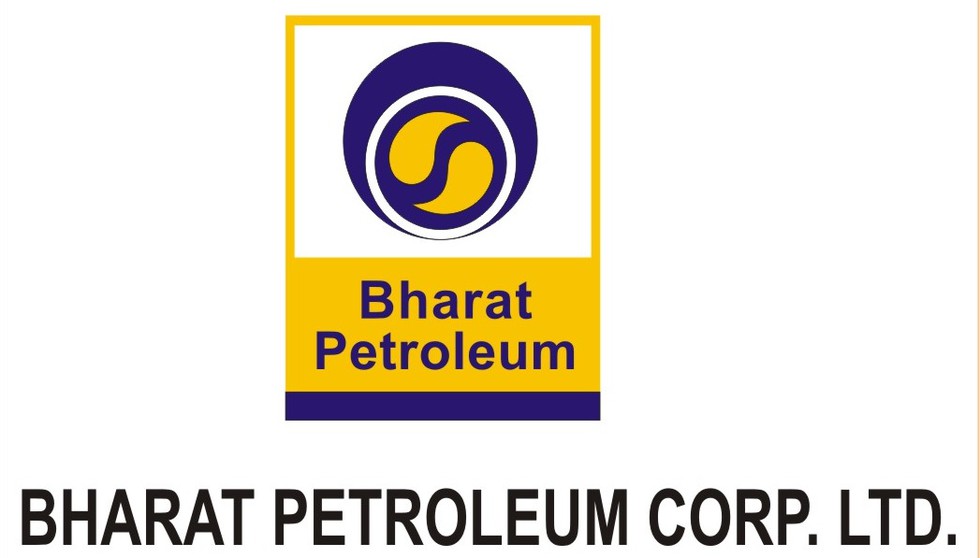
About:
- Location: Krishnapatnam, Andhra Pradesh.
- Objective: Fully automated and State of the art Coastal Installation Project will ensure the security of the petroleum products for Andhra Pradesh.
- Cost: The estimated cost of the project, spread over 100 acres is Rs. 580 crores.
- Project Duration: The project will be commissioned by November 2020.
Bharat Petroleum Corporation Limited (BPCL)?
- BPCL is a Government of India controlled oil and gas company.
- The company is India's 2nd largest downstream oil company. It operates Mumbai Refinery, Kochi Refineries, Bina Refinery (Madhya Pradesh) and Numaligarh Refinery (Assam).
- HQ: Mumbai, Maharashtra.
- Status: Maharatna.
- History: It was incorporated in Scotland in 1886 as the Burma Oil Company. Thereafter it was known as Burma Shell. In 1976, the Burmah Shell was taken over by the Government of India to form Bharat Refineries Limited. In 1977, it was renamed Bharat Petroleum Corporation Limited.
Prelims Pointers
Feb. 11, 2019

About:
- Background: The Ministry of Petroleum and Natural Gas (MoPNG) launched the Open Acreage Licensing Programme (OALP) in June 2017 to accelerate the Exploration and Production (E&P) activities in India.
- Features: The OALP adopts all features of Hydrocarbon Exploration and Licensing Policy (HELP) - reduced royalty rates, no Oil Cess, uniform licensing system, marketing and pricing freedom, Revenue Sharing Model, Exploration rights on all retained area for full contract life etc.
- OALP envisages six monthly periodic bidding rounds starting from July 1, 2017.
- First two rounds: Following the contract signing of 55 Blocks under OALP Bid Round-I, the Government launched OALP Bid Round-II on 07th January 2019 offering 14 Blocks under Petroleum Operation Contract for International Competitive Bidding.
- Third round: Under this Bid round, 23 blocks spread across 12 sedimentary basins, covering over 31,000 sq. km of area will be available for exploration. With the launch of the third bidding round, more than 1,20,000sq km of area has now been made available for exploration in last one year.
Prelims Pointers
Feb. 11, 2019
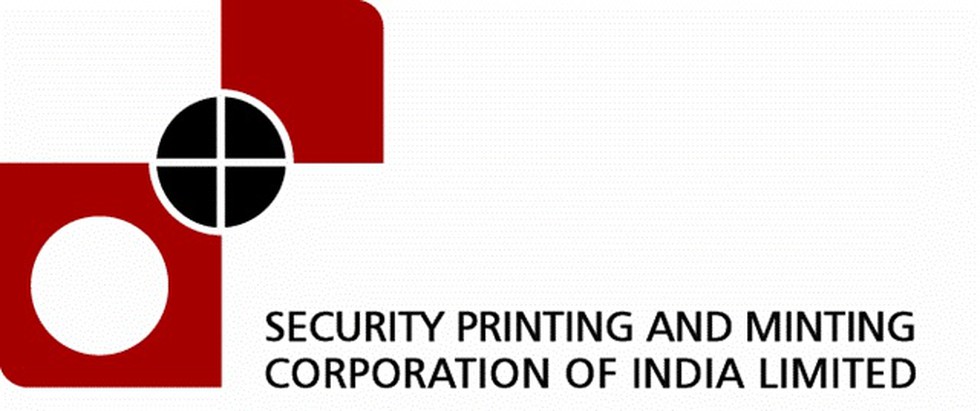
About:
- Origin: It was formed in 2006 under the Companies Act, 1956 as the result of corporatization of security presses and mints functioning under the Indian Ministry of Finance.
- Status: It is a Miniratna Category-I CPSE, and wholly owned Schedule ‘A’ Company of Government of India under the administrative control of Department of Economic Affairs, Ministry of Finance.
- Functions:
- It is engaged in the manufacture of security paper, minting of coins (including commemorative coins), printing of currency and bank notes, non-judicial stamp papers, postage stamps, travel documents, etc.
- For the above purpose it contains nine units, four mints, four presses and a paper mill.
- It is engaged in the manufacture of security paper, minting of coins (including commemorative coins), printing of currency and bank notes, non-judicial stamp papers, postage stamps, travel documents, etc.
- HQ: New Delhi.
Prelims Pointers
Feb. 11, 2019
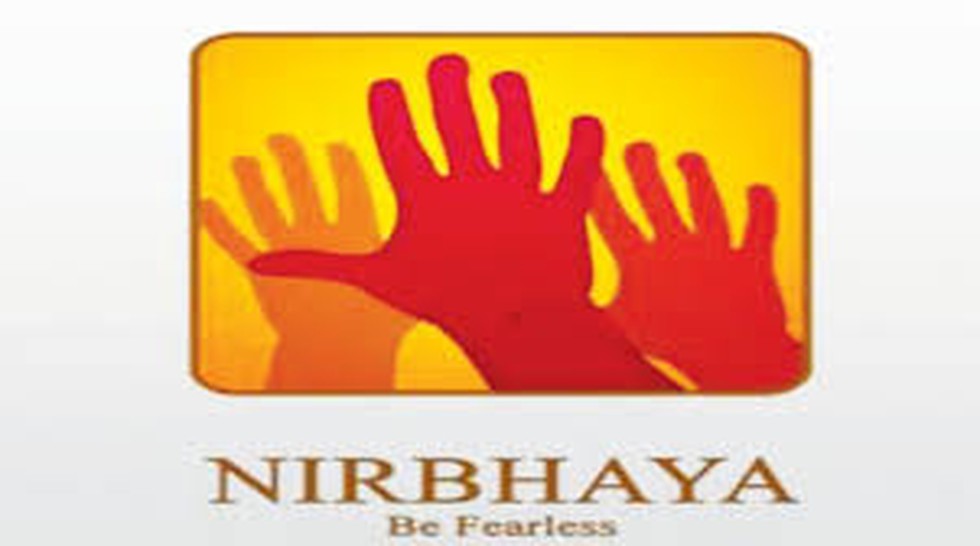
About:
- Objective: For implementation of initiatives aimed at enhancing the safety and security for women in the country.
- Established in: 2013.
- Established by: Union Finance Ministry.
- Type: It is a non-lapsable corpus fund.
Schemes of Ministry of Women and Child Development under Nirbhaya Fund:
- One Stop Centre Scheme (Sakhi Centres):
- It is being implemented across the country since 1st April 2015.
- It aims at establishing Centres to facilitate women affected by violence. It provides First aid, Medical aid, Police assistance, Legal aid and counselling support.
- It is being implemented across the country since 1st April 2015.
- Women Helpline (181):
- The Department of Telecommunication has allocated the number 181 to all States/UTs for Women Helpline.
- This helpline number will link the One Stop Centres being established by the Ministry of Women & Child Development.
- The Department of Telecommunication has allocated the number 181 to all States/UTs for Women Helpline.
- Mahila Police Volunteers (MPVs):
- These will act as a link between police and community and help women in distress.
- Haryana launched the scheme in 2016, thereby becoming the first state to launch it.
- These will act as a link between police and community and help women in distress.
Schemes of other Ministries/Departments under Nirbhaya Fund:
- Central Victim Compensation Scheme (CVCF):
- It has been created with a corpus of Rs.200 crores under section 357A CrPC.
- It will support States/UTs in providing fund towards compensation to the victim or her dependents who have suffered loss or injury as a result of the crimes (including survivors of rape and acid attack).
- Ministry in charge: Home affairs.
- It has been created with a corpus of Rs.200 crores under section 357A CrPC.
- Emergency Response Support System (ERSS):
- ERSS envisages an integrated computer aided emergency response platform to respond to distress calls and ensure speedy assistance to the distressed persons.
- It aims to integrate all emergency numbers to 112 with state of art technology.
- Ministry in charge: Home affairs.
- ERSS envisages an integrated computer aided emergency response platform to respond to distress calls and ensure speedy assistance to the distressed persons.
- Integrated Emergency Response Management System:
- The project aims to provide round the clock security to women passengers in all Railway Stations by strengthening of Security Control Rooms of Railways with Security Helpline, Medical Facilities, RPF and police, installation of CCTV cameras, etc.
- Ministry in charge: Railways.
- The project aims to provide round the clock security to women passengers in all Railway Stations by strengthening of Security Control Rooms of Railways with Security Helpline, Medical Facilities, RPF and police, installation of CCTV cameras, etc.
Feb. 10, 2019
Prelims Pointers
Feb. 10, 2019
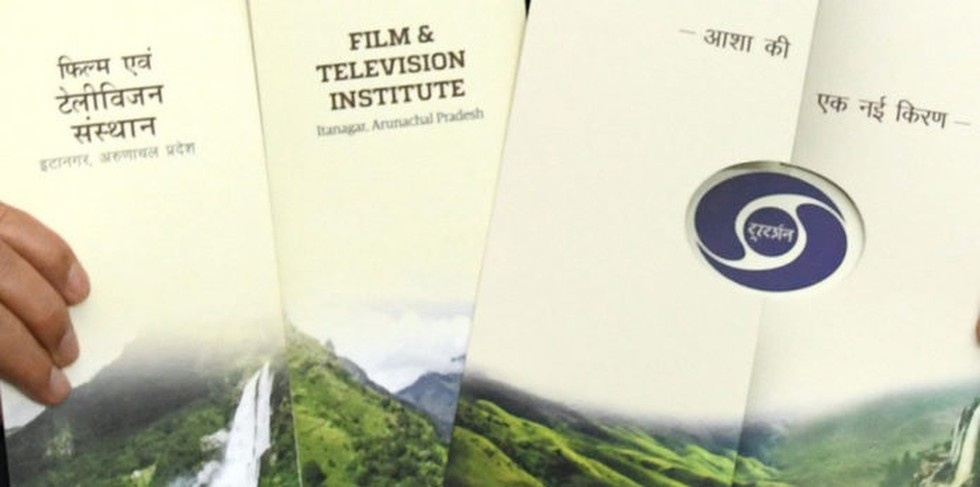
FTII Arunachal Pradesh:
- This is the third Film and Television Institute of Ministry of Information and Broadcasting (I&B), the first two being FTII Pune and SRFTI Kolkata. It is the first Film and Television Institute of entire North-East.
- It will provide a boost to the talented youngsters of the North-East in film and television sector.
- The project, to be constructed at around 20 km from Itanagar, will be executed by CPWD and is expected to be completed in 25 months’ time.
- FTII is India's premier film and television institute, with its alumni becoming technicians, actors and directors in the film and television industry.
- Status: It is an autonomous institute under the Ministry of Information and Broadcasting of the Government of India.
- Location: It is situated in Pune.
- Established in: 1960.
Prelims Pointers
Feb. 10, 2019
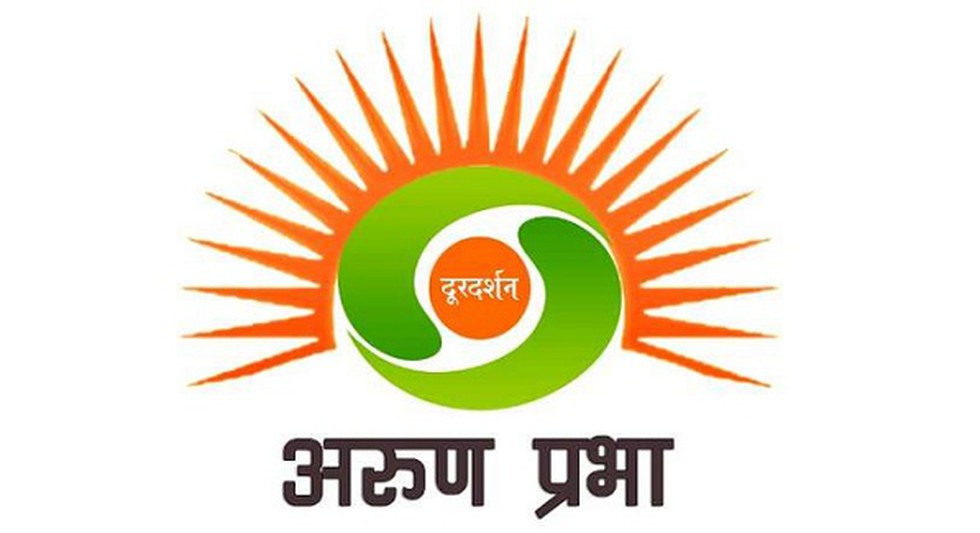
About:
- It will be a 24x7 satellite television channel and is Doordarshan’s second channel for the north-eastern region, after DD North East and overall 24th satellite channel operated by Doordarshan.
- It is equipped with state of the art facilities, including a Digital Satellite News Gathering unit to provide live coverage from remote locations, for 24×7 telecast.
- The channel will showcase the rich tradition and diversity of local culture, apart from airing content sensitive to the needs of local population including news, travelogues, mythological shows, documentaries, magazines, tele-films, reality shows, daily shows etc.
Prelims Pointers
Feb. 10, 2019
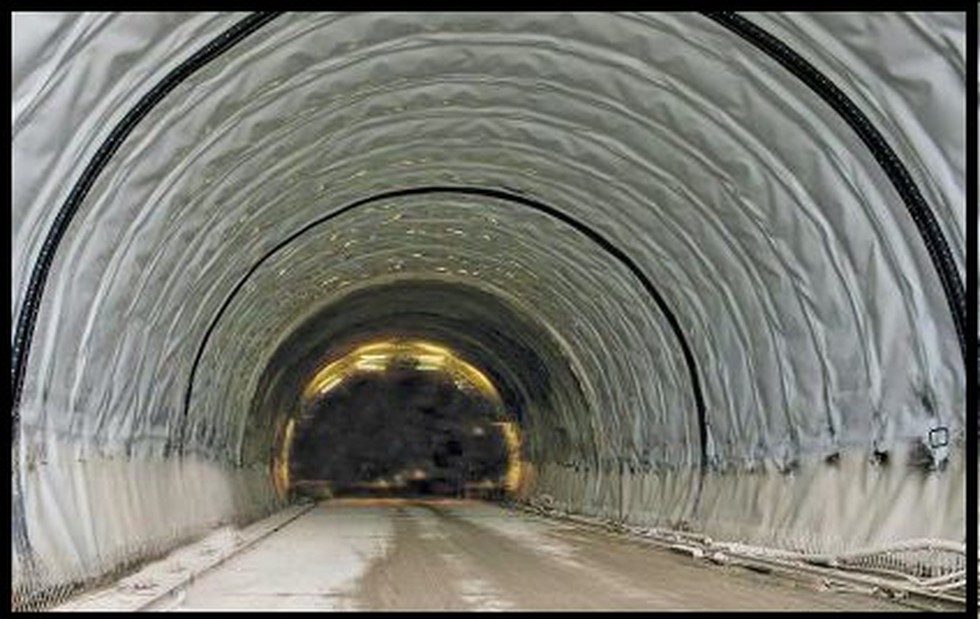
About:
- Location: The proposed all-weather tunnel will be constructed under Se La, the critical high-altitude mountain pass which connects Tawang to the rest of Arunachal Pradesh and the Indian mainland.
- Key highlights: The Project covers a total distance of 12.04 kms which consist of two tunnels of 1790 and 475 meters. Once completed this would result in –
- All weather connectivity to Tawang and forward areas.
- Reduction in more than one hour of travelling time from Tezpur to Tawang.
- Travellers would be able to avoid the dangerous snow covered Sela top at a height of 13,700 feet.
- All weather connectivity to Tawang and forward areas.
- Executed by: Border Roads Organisation (BRO).
- Project Duration: Three years.
- Comment: All weather connectivity to Tawang would be a game changer for the local population ahead of Sela apart from allowing faster troop mobility along the border to impart a much-needed strategic thrust to Indian military forces against China.
India vs China in Border Infrastructure:
- Indian scenario:
- There is huge delays in border infrastructure development as well as the 73 “strategic” all-weather roads (totalling 4,643-km) that were identified for construction along the 4,057-km Line of Actual Control (LAC) almost two decades ago.
- Of the 61 roads entrusted to BRO, with more east-west lateral links as well as better access routes to strategic peaks and valleys, only 34 have been fully completed till now.
- Chinese scenario:
- China, in sharp contrast, has systematically built an extensive military infrastructure in the Tibet Autonomous Region, which includes 14 airbases, an extensive rail network and over 58,000-km of roads.
- It gives the People’s Liberation Army (PLA) the capability to swiftly induct and sustain 30-32 divisions (each with over 12,000 troops) along the LAC.
- Moreover, China is now also constructing underground hangers and parking bays for its fighters by digging tunnels into mountains at some of the airbases.
Prelims Pointers
Feb. 10, 2019
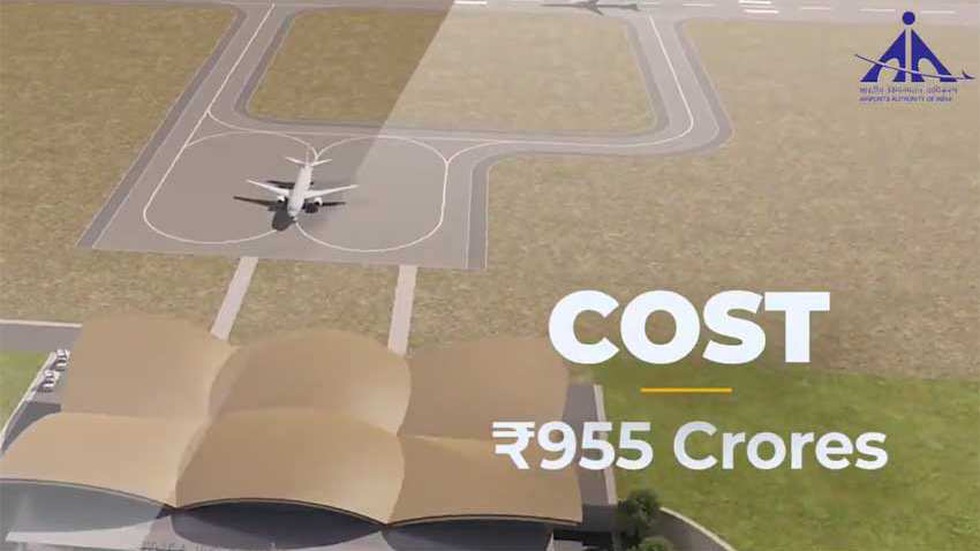
About:
- Location: Hollongi airport will come up 25 kilometres away from the state capital Itanagar.
- Salient Features:
- A 2,200 meter runway has been proposed for the upcoming Hollongi airport.
- Jet aircraft will be able to take off and land on this greenfield airport.
- If needed, international flight operations will be allowed depending upon the demand.
- The total cost of the airport at Hollongi will be Rs 1042 crore in which Centre will provide Rs 955 crore and the state's share will be Rs 87 crore.
- A 2,200 meter runway has been proposed for the upcoming Hollongi airport.
- Significance:
- The greenfield airport at Hollongi will be a great help to the people Itanagar as at present the nearest airport to Itanagar is at Lilabari in Assam at a distance of 80 km. The airport at Hollongi will reduce the distance by a fourth.
- In addition to providing better connectivity to the region, the airport will also unravel the tourism potential of the state. The airport will boost the economic growth of the region and will be of strategically important to the nation.
- The airport will have various sustainability features like green belt along approach road to act as noise barrier.
- The greenfield airport at Hollongi will be a great help to the people Itanagar as at present the nearest airport to Itanagar is at Lilabari in Assam at a distance of 80 km. The airport at Hollongi will reduce the distance by a fourth.
- Comment: Right from bringing Arunachal Pradesh and Meghalaya on the Indian Railways map to inaugurating Sikkim's first greenfield airport at Pakyong, the NDA government has been working to boost connectivity in the Northeastern states of the country.
Prelims Pointers
Feb. 10, 2019

About:
- Meaning: The snow avalanche, a common occurrence in snow covered mountainous regions, is a slide of snow mass down a mountainside. This is a rapid downslope movement of a large detached mass of snow, ice, and associated debris such as rocks and vegetation.
- Types: There are two basic types of avalanches –
- Loose snow avalanches form in snow masses with little internal cohesion among the individual snow crystals.
- Slab avalanches originate in snow with sufficient internal cohesion to enable a snow layer, or layers, to react mechanically as a single entity.
- Loose snow avalanches form in snow masses with little internal cohesion among the individual snow crystals.
- Causes:
- Avalanches form as soon as the force of gravity on the snow cover exceeds its mechanical strength. To be caused, an avalanches needs a steep slope, snow cover, a weak layer in the snow cover, and a trigger to initiate movement.
- Snow avalanches may occur on any slope where enough snow is deposited in the right circumstances. Snow does not accumulate significantly on steep slopes; also, snow does not flow easily on flat slopes.
- Most avalanches of dangerous size therefore originate on slopes with inclinations of between 30 degrees and 45 degrees.
- Avalanches form as soon as the force of gravity on the snow cover exceeds its mechanical strength. To be caused, an avalanches needs a steep slope, snow cover, a weak layer in the snow cover, and a trigger to initiate movement.
- Impact of Snow Avalanches:
- The forces generated by moderate or large avalanches can damage or destroy most manmade structures. The debris from even small avalanches is enough to block a highway or rail-road.
- A large avalanche can run for many kilometres, and result in massive destruction of forests and anything else that comes in its way.
- The forces generated by moderate or large avalanches can damage or destroy most manmade structures. The debris from even small avalanches is enough to block a highway or rail-road.
Prelims Pointers
Feb. 10, 2019
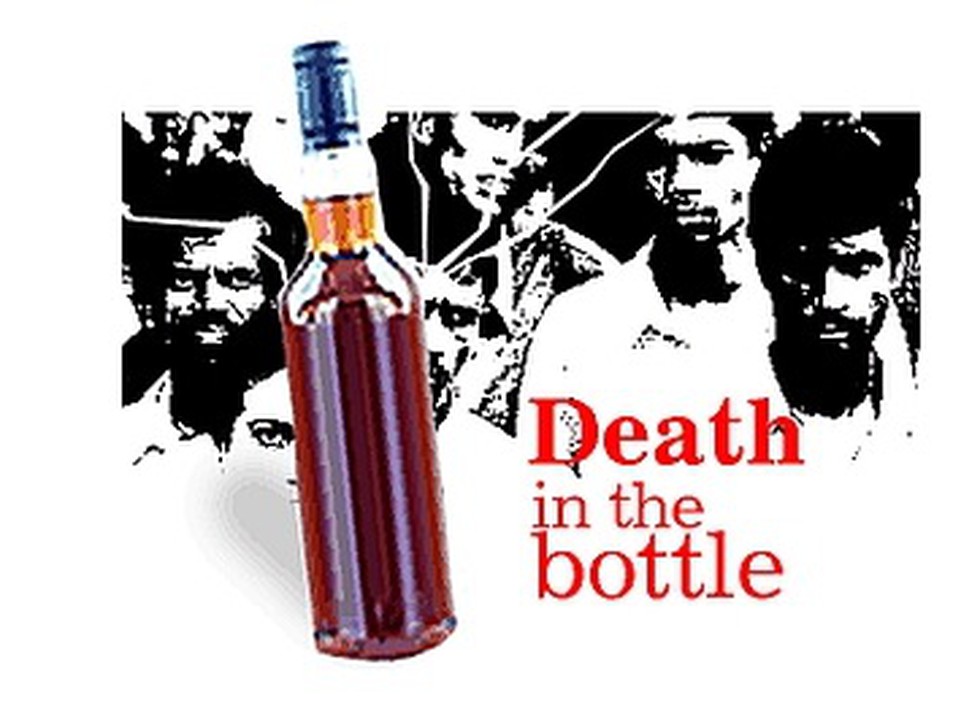
About:
- Alcohol: Alcoholic beverages are made by fermentation of sugary and starchy substances, followed by distillation to increase alcohol concentration. The active ingredient in them is ethyl alcohol or ethanol.
- Illicit liquor (Hooch):
- Any alcoholic beverage made under unlicensed conditions is called illicit liquor. Usually sub-standard raw material is used, often this is spiked with other chemicals.
- The term hooch is a popular slang for illicit liquor. The origin of the term hooch is said to come from the Hoochinoo Indians of Alaska.
- Any alcoholic beverage made under unlicensed conditions is called illicit liquor. Usually sub-standard raw material is used, often this is spiked with other chemicals.
- What makes it poisonous?
- Under unregulated conditions, methanol or methyl alcohol can be produced with the desired ethanol.
- Sometimes, industrial methyl alcohol or denatured spirit (mixture of ethanol and methanol) is added by illicit brewers to save costs and in mistaken belief that it’ll increase potency.
- Methyl alcohol is extremely toxic — 10 ml can cause blindness and 30 ml can cause death within 10 to 30 hours. It is like ethyl alcohol in taste and smell.
- Under unregulated conditions, methanol or methyl alcohol can be produced with the desired ethanol.
- Treatment:
- Ethyl alcohol and fomepizole are used as antidotes, inhibiting metabolizing of methyl alcohol so that it passes through urine.
- Advanced treatment requires haemodialysis to remove toxic substances from bloodstream.
- Ethyl alcohol and fomepizole are used as antidotes, inhibiting metabolizing of methyl alcohol so that it passes through urine.
Prelims Pointers
Feb. 10, 2019
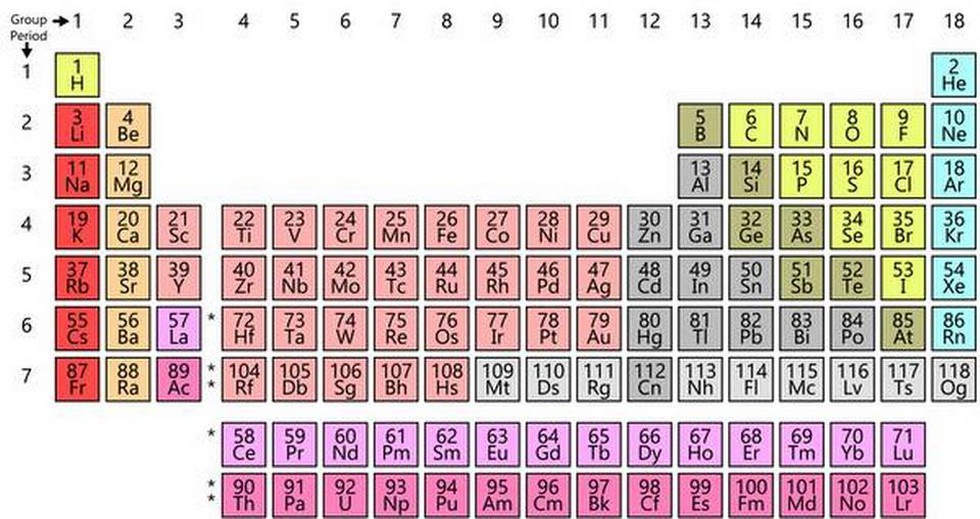
About:
- The periodic table of the chemical elements is a tabular display of the known chemical elements.
- Salient Features:
- The elements are arranged by electron structure so that many chemical properties vary regularly across the table. Each element is listed by its atomic number and chemical symbol.
- Metals reside on the left side of the table, while non-metals reside on the right.
- The columns, called groups, contain elements with similar chemical behaviours.
- The elements are arranged by electron structure so that many chemical properties vary regularly across the table. Each element is listed by its atomic number and chemical symbol.
- Present status:
- The elements from atomic numbers 1 (hydrogen) through 118 (oganesson) have been discovered or synthesized, completing seven full rows of the periodic table.
- The first 94 elements all occur naturally. Elements 95 to 118 have only been synthesized in laboratories or nuclear reactors.
- The elements from atomic numbers 1 (hydrogen) through 118 (oganesson) have been discovered or synthesized, completing seven full rows of the periodic table.
- History:
- The ‘Periodic Table of Elements’ was written by Russian chemist Dmitri Ivanovich Mendeleev in 1869.
- Mendeleev’s finding was that “The elements, if arranged according to their atomic weights, exhibit an evident stepwise variation of properties”.
- While putting together all the 63 elements known at that time, his periodic table placed four slots between the known ones with question marks.
- The current periodic table is far removed from the original version of Mendeleev. Yet, the core principle that ‘properties of elements are periodic functions of the inherent properties of its atoms’ remain.
- The ‘Periodic Table of Elements’ was written by Russian chemist Dmitri Ivanovich Mendeleev in 1869.
- Significance:
- The periodic table is organized so scientists can quickly discern the properties of individual elements such as their mass, electron number, electron configuration and their unique chemical properties.
- Mendeleev’s profound impact on chemistry is comparable to those of his contemporaries, Gregor Mendel and Charles Darwin in genetics and evolution, respectively. For that reason, element 101 is aptly named as Mendelevium (Md).
- The periodic table is organized so scientists can quickly discern the properties of individual elements such as their mass, electron number, electron configuration and their unique chemical properties.
Prelims Pointers
Feb. 10, 2019

About:
- The studies involve men with Hunter or Hurler Syndrome, diseases caused by a missing gene that makes an enzyme to break down certain sugar compounds. Without it, sugars build up and damage organs, often killing people in their teens.
- Working:
- In 2017, Brian Madeux of Arizona became the first person to try it. Through an IV, he received many copies of a corrective gene and an editing tool called zinc finger nucleases to insert it into his DNA.
- Joseph Muenzer of the University of North Carolina at Chapel Hill, helped test the treatment, with the help of the therapy's maker, California-based Sangamo Therapeutics.
- In 2017, Brian Madeux of Arizona became the first person to try it. Through an IV, he received many copies of a corrective gene and an editing tool called zinc finger nucleases to insert it into his DNA.
- Findings:
- Results on him and seven other Hunter patients, plus three with Hurler Syndrome, suggest the treatment is safe, which was the main goal of these early experiments.
- Preliminary results suggest that two men with a rare disorder now have a corrective gene at very low levels, which may not be enough to make the therapy a success.
- Still, it’s a scientific milestone, a first step toward one day doctoring DNA to treat many diseases caused by faulty genes.
- Results on him and seven other Hunter patients, plus three with Hurler Syndrome, suggest the treatment is safe, which was the main goal of these early experiments.
- Significance:
- In body Gene editing is intended as a more precise way to do gene therapy, to disable a bad gene or supply a good one that’s missing.
- Trying it in adults to treat diseases is not controversial and the DNA changes do not pass to future generations, unlike the recent case of a Chinese scientist who claims to have edited twin girls’ genes when they were embryos.
- In body Gene editing is intended as a more precise way to do gene therapy, to disable a bad gene or supply a good one that’s missing.
Prelims Pointers
Feb. 10, 2019
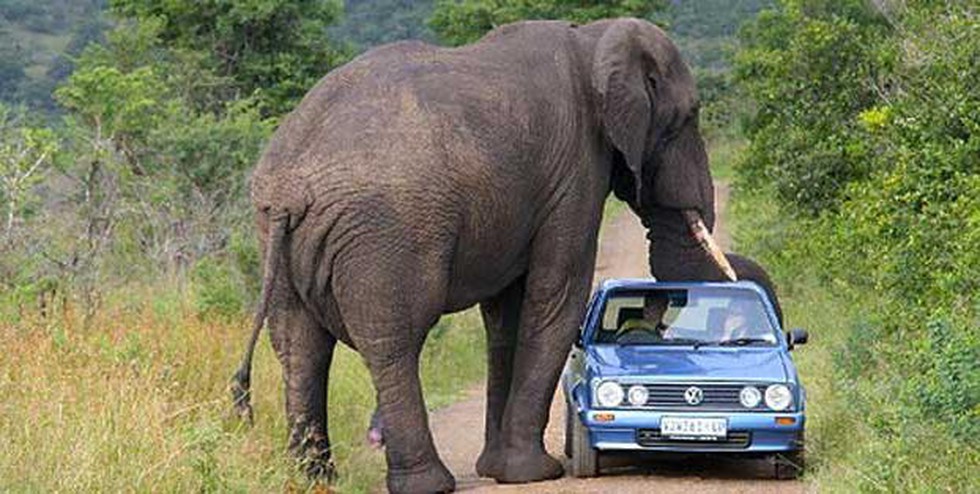
Key findings:
- In the three years between 2015-2018, human-elephant conflict caused 1,713 human and 373 elephant deaths by unnatural causes. Damage to houses and crops had been reported in several States.
- State’s scenario:
- Highest numbers of human casualties had occurred in West Bengal (307 deaths), followed closely by Odisha (305). The fragmented landscape in West Bengal makes it difficult to prevent elephant or human deaths.
- The data does not mention the States with the highest number of elephant-related deaths.
- Highest numbers of human casualties had occurred in West Bengal (307 deaths), followed closely by Odisha (305). The fragmented landscape in West Bengal makes it difficult to prevent elephant or human deaths.
- Factors:
- Various factors, including habitat disturbance and urbanisation, could be the cause of the alarming rise in unnatural human and animal casualties.
- Elephant Deaths caused by electrocution stood at 226, contributing to 60.6% of deaths since 2015. In comparison, elephant deaths by all other causes, including train accidents, poaching and poisoning, added up to 147.
- Various factors, including habitat disturbance and urbanisation, could be the cause of the alarming rise in unnatural human and animal casualties.
Recommendations/steps:
- Localised solutions have been recommended to elephant-related problems. Policy should be formed to provide solutions suited to the particular geography. E.g. compact landscapes like ones in the Nilgiris provide little space for interaction between wild elephants and people.
- There is a need to increase community participation in the protection of crop lands and elephants.
- The Ministry has approved the construction of physical barriers such as barbed wire fences, solar powered electric fences, and bio-fencing using cactus and boundary walls, to prevent the entry of elephants into agricultural land.
Prelims Pointers
Feb. 10, 2019
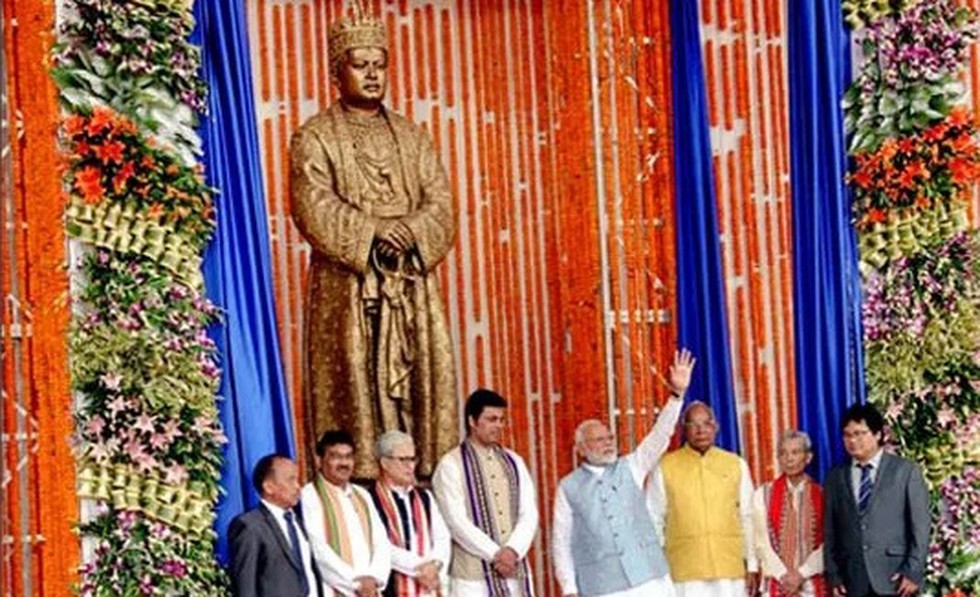
About:
- Bir Bikram Kishore Debbarman (1908–1947) was the king of Tripura State till 1947 (two years later, in 1949, the state acceded to India).
- He played an important role in the development of Tripura:
- Father of modern architecture in Tripura: During his rule the entire planning of present-day Tripura was initiated.
- Pioneer in land reforms: In 1939, he reserved land for the local Tripura tribals. Later, this step was instrumental in the creation of the Tripura autonomous district council.
- Airport development: He built the first airport in Tripura (Agartala airport).
- Father of modern architecture in Tripura: During his rule the entire planning of present-day Tripura was initiated.
Feb. 9, 2019
Prelims Pointers
Feb. 9, 2019
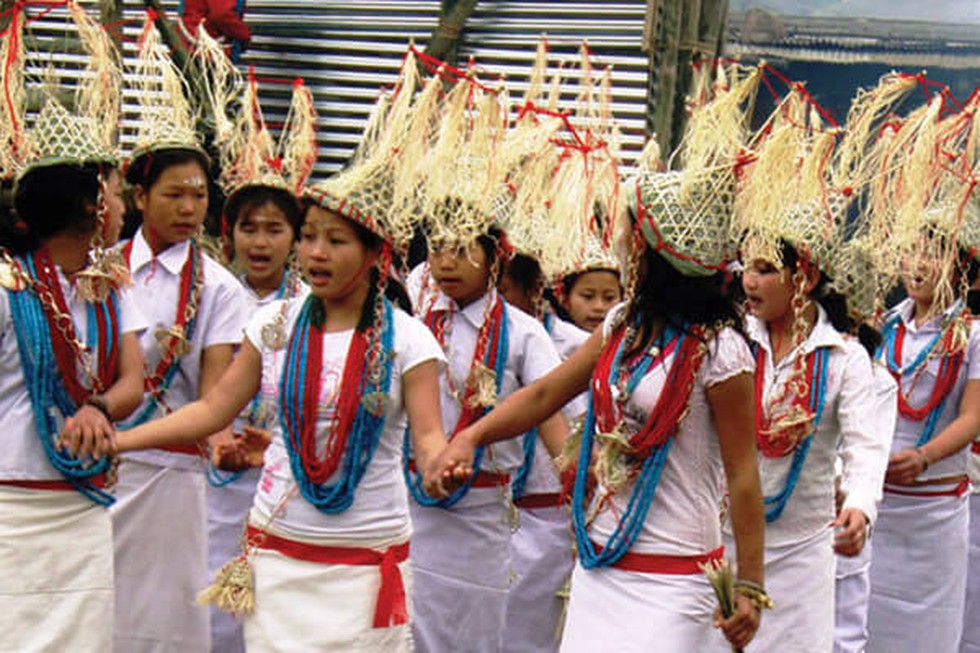
About:
- Timing: Boori Boot Yollo is observed in the month of February every year to welcome spring and a successful harvest.
- Celebrated by: It is exclusively performed by Nyishi tribes, the largest community in Arunachal Pradesh, and are mainly settled in Daporijo, Upper Subansiri Locale and Raga and Dollungmukh ranges of Lower Subansiri Region of Arunachal Pradesh.
- Nomenclature: It is believed that the festival evokes the spirit of Boori Boot, who will bless them with all the happiness, and free from every kind of disease.
- Key highlights:
- This fortnight-long festival begins with various competition like tug of war, folk dance, and archery.
- A special puja is performed by the priest- Nibu, followed by an animal sacrifice for the mankind to be blessed with prosperity and be free from diseases.
- This fortnight-long festival begins with various competition like tug of war, folk dance, and archery.
Prelims Pointers
Feb. 9, 2019
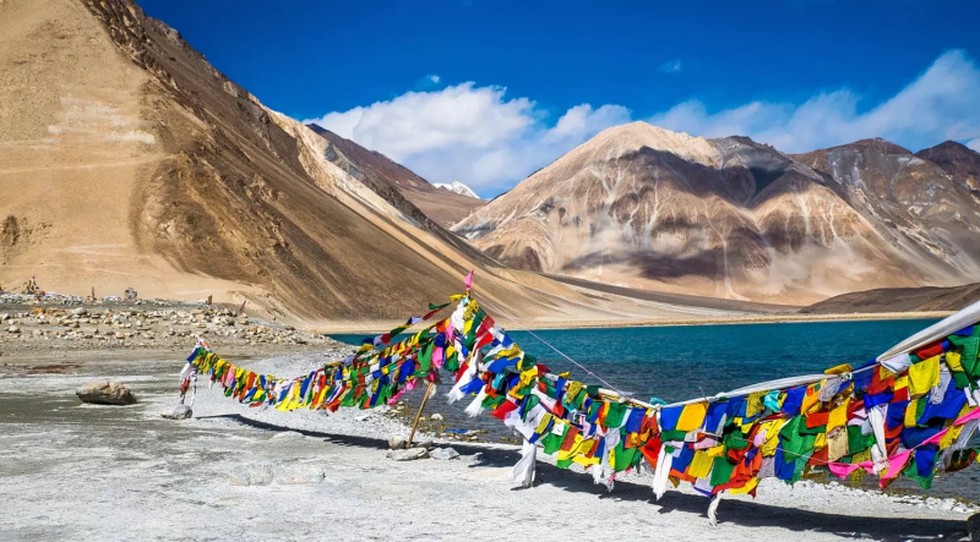
About:
- Legal backing:
- While exercising powers conferred in Section 5 of Land Revenue Act, the State Government of Jammu and Kashmir issued a notification of creation of Ladakh as 3rd Administrative and Revenue Division in the state.
- This division will comprise Leh and Kargil Districts with its headquarters at Leh.
- While exercising powers conferred in Section 5 of Land Revenue Act, the State Government of Jammu and Kashmir issued a notification of creation of Ladakh as 3rd Administrative and Revenue Division in the state.
- Benefits:
- For almost three decades, Ladakh region is demanding for Union Territory status with Legislation. The Divisional Status is considered as a step ahead towards the dream of Union Territory.
- Ladakh has two Hill Councils in Leh and Kargil for their Administration. The Hill Councils are recently empowered with financial and Administrative powers with an amendment in the Act. New status would further empower the Administration.
- Divisional status would facilitate this region in a great way to progress. Routine administrative clearances for Leh and Kargil can be obtained at Divisional headquarters in Leh.
- In the new Ladakh Division both Leh and Kargil districts will get equal benefits. Offices and the opportunities will be distributed to both the districts.
- For almost three decades, Ladakh region is demanding for Union Territory status with Legislation. The Divisional Status is considered as a step ahead towards the dream of Union Territory.
- The move leaves the Kashmir valley geographically the smallest division at 15,948 sq. km, Jammu division at 26,293 sq. km and Ladakh, the biggest division, at 86,909 sq. km.
Prelims Pointers
Feb. 9, 2019
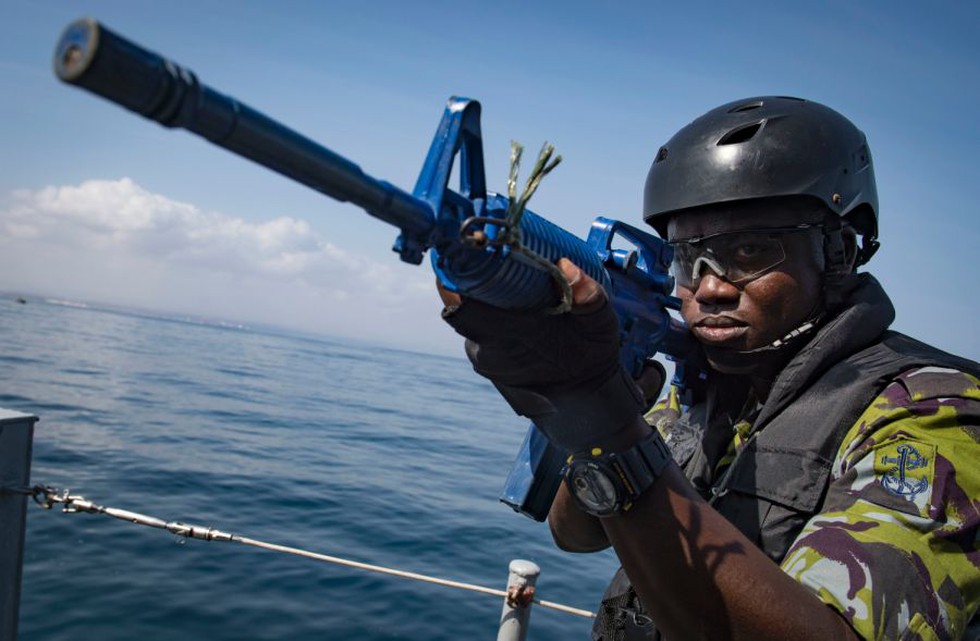
About:
- Cutlass Express 2019 was the eighth iteration of the annual multinational maritime exercise.
- Venue: It was held near Djibouti, Mozambique and the Seychelles.
- Participants: Maritime forces from East Africa, West Indian Ocean nations, Europe and the US, as well as several international organisations are participating in the exercise.
- Objective: To assess and improve combined maritime law enforcement capacity, promote national and regional security in East Africa. As part of the exercise, forces focussed on areas, such as combat illicit trafficking, piracy and search and rescue operations.
- Bodies involved: It was sponsored by US Africa Command (AFRICOM) and conducted by U.S. Naval Forces Africa.
- Key firsts of the exercise:
- India participated for the first time in the exercise.
- The Indian Ocean Regional Information Sharing (IORIS) a web-based platform through the European Union Critical Maritime Routes Indian Ocean (CRIMARIO) project was implemented for the first time.
- India participated for the first time in the exercise.
Cutlass Express is one of three Africa-focused regional, “Express” series exercises sponsored by U.S. AFRICOM and facilitated by U.S. Naval Forces Europe-Africa/U.S. 6th Fleet.
The exercise falls under Africa Partnership Station, the umbrella program for the Express series of exercises and other capacity-building initiatives throughout Africa.
Prelims Pointers
Feb. 9, 2019
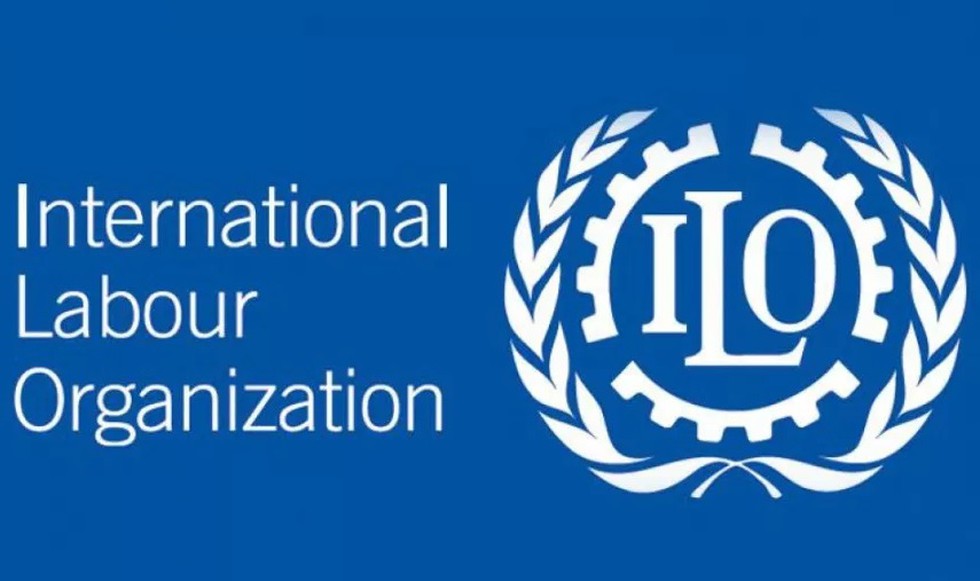
About:
- The International Labour Organization (ILO) is the United Nations agency for the world of work. It is also a member of the United Nations Development Group (UNDP).
- Mandate: It sets international labour standards, promotes rights at work and encourages decent employment opportunities, the enhancement of social protection and the strengthening of dialogue on work-related issues.
- Structure:
- It is the only tripartite U.N. agency, that brings together governments, employers and workers’ representatives of 187-member States.
- The 187-member states of ILO comprise 186 of the 193 UN member states plus the Cook Islands are members of the ILO.
- It is the only tripartite U.N. agency, that brings together governments, employers and workers’ representatives of 187-member States.
- Motto: ILO’s mandate as the basis for peace is expressed today as Decent Work for all.
- HQ: Geneva, Switzerland.
- Parent organization: Economic and Social Council of the United Nations.
- History:
- It was created in 1919, as part of the Treaty of Versailles that ended World War I, to reflect the belief that universal and lasting peace can be accomplished only if it is based on social justice.
- In 1946, the ILO became a specialized agency of the newly formed United Nations.
- The Organization won the Nobel Peace Prize on its 50th anniversary in 1969.
- It was created in 1919, as part of the Treaty of Versailles that ended World War I, to reflect the belief that universal and lasting peace can be accomplished only if it is based on social justice.
- India and ILO:
- India is one of the founding members of ILO.
- India has ratified 47 out of 189 ILO conventions during the century. Out of eight core conventions India has ratified six and two conventions (C-138 and C-182), which were related to child labour have been ratified by the present government.
- India is one of the founding members of ILO.
Prelims Pointers
Feb. 9, 2019

About:
- Bodies involved: The Trial was Funded by biotechnology companies Genmab and Seattle Genetics and led by the Institute of Cancer Research (ICR) in the UK.
- Working:
- Tisotumab Vedotin (TV) uses a ‘Trojan horse’ approach to enter tumours and release a toxic substance, killing the cancerous cells from within.
- It consists of a toxic drug linked to the tail end of an antibody, which is engineered to identify the tissue factor receptor.
- This receptor is known to be present in high levels on the surface of many cancers cells and associated with worse survival.
- Tisotumab Vedotin (TV) uses a ‘Trojan horse’ approach to enter tumours and release a toxic substance, killing the cancerous cells from within.
- Findings: Patients with advanced, drug-resistant cancers were observed to respond to the drug, with their tumours shrinking or stopping growing. The main side effects observed during the trial were nausea, fatigue, nose bleeds, and eye problems.
- Present status of Trial: The drug is currently being studied in other cancer types such as pancreatic, squamous cell lung and head and neck cancers. It is also undergoing a Phase II trial as a second-line treatment for cervical cancer.
- Comment: The treatment mechanism is completely novel, it acts like a Trojan horse to sneak into cancer cells and kill them from the inside. It has the potential to treat a large number of different types of cancer, and particularly some of those with very poor survival rates.
Prelims Pointers
Feb. 9, 2019
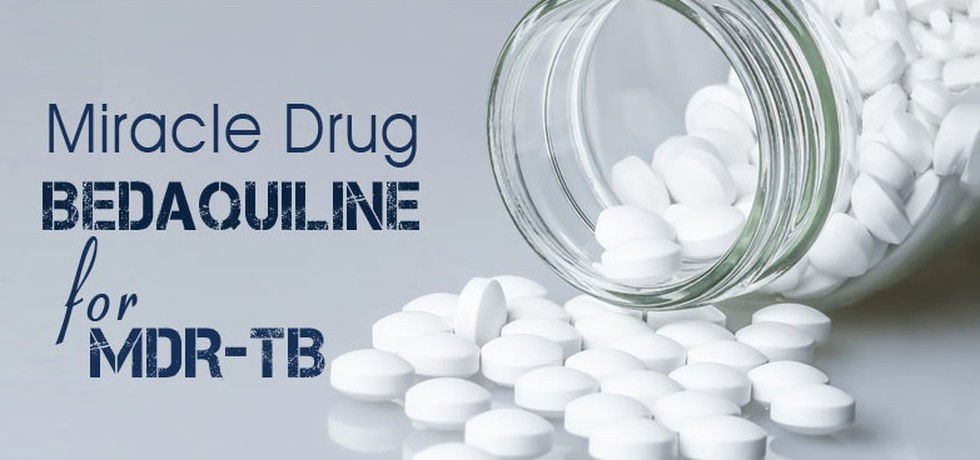
About:
- Bedaquiline is a bactericidal drug which belongs to a new class of antibiotics (diarylquinolines).
- Usage: It is recommended by WHO specifically for the treatment of patients suffering from multidrug-resistant tuberculosis (MDR-TB). It is not recommended for treating latent TB infection.
- Functioning: It is different from other anti-TB drugs as it interferes with the function of an enzyme required by the tuberculosis bacterium to produce energy and to replicate.
- Side-effects: However, Bedaquiline has been reported to disturb the function of the heart and liver in particular. Thus, patients using this needs to be closely monitored.
- Usage in India: The drug is made available only to the Centre, which in turn rations it to the States. It is not available for private purchase because of concerns of drug-resistance by Mycobacterium tuberculosis, the bacterium that causes TB.
- In October 2018, the World Health Organisation (WHO) included bedaquiline drug, specifically developed for treating multidrug-resistant TB (resistant to isoniazid and rifampicin) patients, in the fully oral regimen.
Prelims Pointers
Feb. 9, 2019
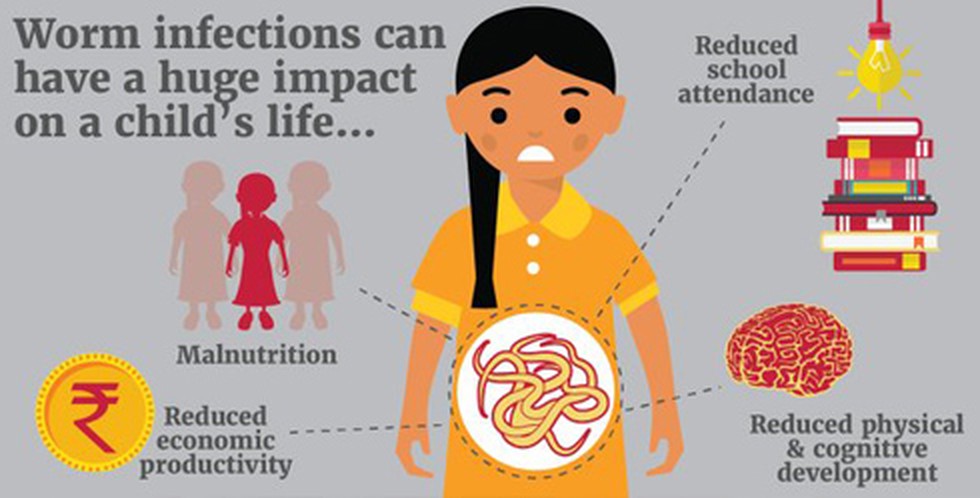
About:
- It is a programme under the banner of National Health Mission.
- Background: It was launched in 2015 as WHO estimates that 220 million children below 14 years of age are at risk of Soil Transmitted Helminths (STH) infections in India.
- Coverage: NDD is observed bi-annually on 10th February and 10th August in all states and UTs followed by mop-up activities.
- Strategy: In this drive, all children, aged 1- 19 years old, whether enrolled or out-of-school will be administered the chewable deworming tablet, ‘ALBENDAZOLE’ tablet, which is an effective solution to control worm infections.
- Ministries involved: This program is being implemented by union health ministry in close collaboration with Ministry of Human Resource & Development and Ministry of Women & Child Development.
Helminths is also commonly known as parasitic worms. Soil Transmitted Helminths (STH) is a type of helminth infection caused by those worms which are transmitted through soil contaminated with ‘faecal’ matter. As per WHO, 64% of the Indian population less than 14 years are at risk of STH infections.
Prelims Pointers
Feb. 9, 2019
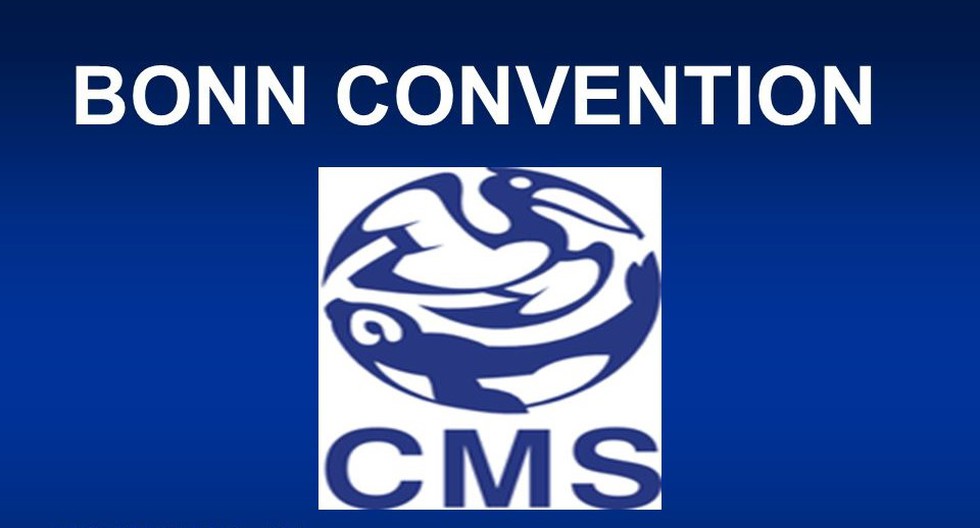
Bonn Convention:
- Convention on Conservation of Migratory Species (CMS) is also referred to as the Bonn Convention.
- The convention has been in force, under the aegis of United Nations Environment Programme (UNEP).
- Its objective is to protect the migratory species throughout their range countries by laying down the legal foundation for internationally coordinated conservation measures.
- Appendix:
- Migratory species threatened with extinction are listed on Appendix I and Parties strive towards strictly protecting these animals.
- Migratory species that need or would significantly benefit from international co-operation are listed in Appendix II of the Convention.
- Migratory species threatened with extinction are listed on Appendix I and Parties strive towards strictly protecting these animals.
- India and CMS:
- India has been a Party to the CMS since 1983.
- India has also signed non-legally binding MOU with CMS on the conservation and management of Siberian Cranes (1998), Marine Turtles (2007), Dugongs (2008) and Raptors (2016).
- India has been a Party to the CMS since 1983.
- The Conference of Parties (COP) is the decision-making organ of this convention.
- Representatives from 129 Parties and eminent conservationists and international NGOs working in the field of wildlife conservation are expected to attend the 13th COP of the Convention on the conservation of migratory species of wild animals (CMS).
Migratory Species?
- Migratory species are those animals that move from one habitat to another during different times of the year, due to various factors such as food, sunlight, temperature, climate, etc. A migratory route can involve nesting.
- India is temporary home to several migratory animals and birds which include Amur Falcons, Bar headed Gheese, Black necked cranes, Marine turtles, Dugongs, Humpbacked Whales, etc.
- Central Asian Flyway (CAF):
- Indian sub-continent is part of the Central Asian Flyway (CAF), a major bird flyway network covering areas between Arctic and Indian Oceans, and at least 279 populations of 182 migratory water bird species, including 29 globally threatened species.
- India has also launched the National Action Plan for conservation of migratory species under the Central Asian Flyway.
Prelims Pointers
Feb. 9, 2019
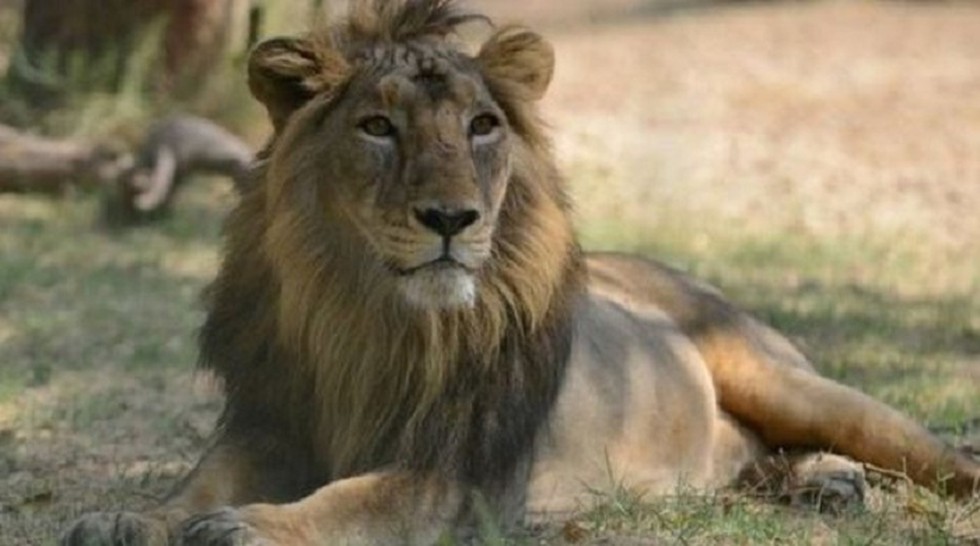
Asiatic Lion:
- Scientific Name: Panthera Leo Persica.
- Common Name: Asiatic lion, Indian Lion.
- Status: Listed in Schedule I of Wildlife (Protection) Act 1972, in Appendix I of CITES and as Endangered on IUCN Red List.
- Characteristics: Asiatic lions are slightly smaller than African lions. The most striking morphological character, which is always seen in Asiatic lions, and rarely in African lions, is a longitudinal fold of skin running along its belly.
- Major threats: The Asiatic lion currently exists as a single subpopulation, and is thus vulnerable to extinction from unpredictable events, such as an epidemic or large forest fire. There are indications of poaching incidents in recent years.
- Population: There are about 700 lions presently in the Gir Forest and they are increasing in number.
- Habitat and Distribution:
- Asiatic lions were once distributed upto the state of West Bengal in east and Rewa in Madhya Pradesh, in central India. At present Gir National Park and Wildlife Sanctuary is the only abode of the Asiatic lion.
- The last surviving population of the Asiatic lions is a compact tract of dry deciduous forest and open grassy scrublands in southwestern part of Saurashtra region of Gujarat.
- Asiatic lions were once distributed upto the state of West Bengal in east and Rewa in Madhya Pradesh, in central India. At present Gir National Park and Wildlife Sanctuary is the only abode of the Asiatic lion.
Asiatic Lion Conservation Project:
- Project Duration: Three financial years FY 2018-19, FY 2019-20 and FY 2020-21.
- Budgetary allocation: It has been launched with the budgetary contribution of Rs 97 Crore from Central Government. With the contribution of the State Govt, about 300 crore rupees will be spent.
- Approach:
- This project has “Species Conservation over a large landscape” approach. Besides this approach, the Greater Gir Region (GGR) is being divided into various zones and management approach of “Zone Plans and Theme Plans”.
- “Zone Plans” include the Core Zone, the Sanctuary Zone, the buffer Zone.
- Theme Plans include Habitat improvement, wildlife health service, addressing to man-wild animal conflict issues, awareness generation and ecotourism.
- This project has “Species Conservation over a large landscape” approach. Besides this approach, the Greater Gir Region (GGR) is being divided into various zones and management approach of “Zone Plans and Theme Plans”.
List of initiatives taken in the recent past for consolidating the conservation of Asiatic Lions:
- The concept of Greater Gir has been adopted through which additional suitable habitat for lion is being developed for the habitation of lion.
- Besides Gir National Park & Sanctuary, Girnar, Pania and Mitiyala have been notified as sanctuaries to widen the protected area network and home of lion.
- Protection mechanism has been strengthened with creation of Wildlife Crime Cell at state level and Task Force for the Greater Gir region (GGR).
- The Asiatic Lion is one of the 21 critically endangered species identified by the Ministry under the species recovery component of Centrally Sponsored Scheme- Development of Wildlife Habitat (CSS-DWH).
Prelims Pointers
Feb. 9, 2019
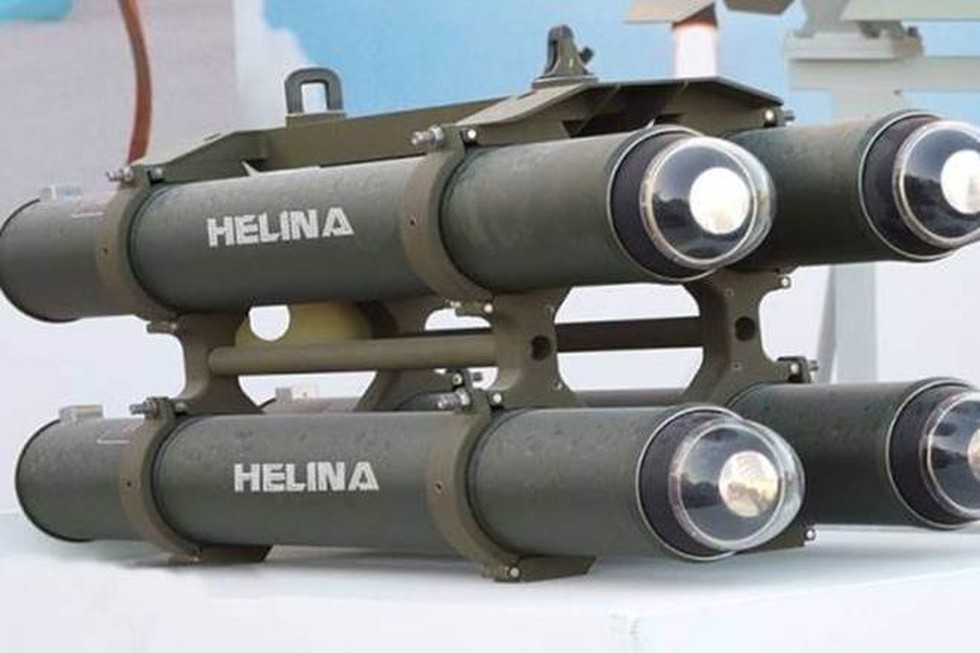
About:
- HeliNa stands for Helicopter-launched Nag. It is a variant of the land-launched Nag anti-tank guided missile. Anti-tank guided missiles are designed to destroy or debilitate tanks and armoured vehicles.
- It is indigenously developed by Defence Research and Development Organisation (DRDO).
- HeliNa is designed to be launched from the HAL Light Combat Helicopter, the HAL Dhruv and its armed variant, HAL Rudra.
- It is one of the most-advanced anti-tank weapons in the world with a hit range of 7-8 km.
- The Nag missile, and HeliNa, are 'fire-and-forget' missiles (i.e. once locked on to a target before their launch, it is guided by an Infrared Imaging Seeker (IIR) that would help track the target's movements and make changes to their trajectory to ensure a hit).
- The Nag along with HeliNa is also undergoing trials, and is yet to be inducted into the Indian Army.

